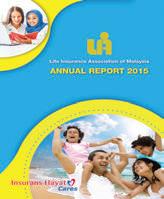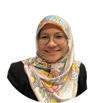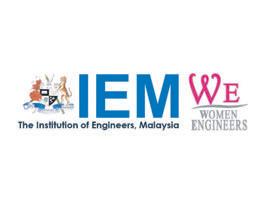
















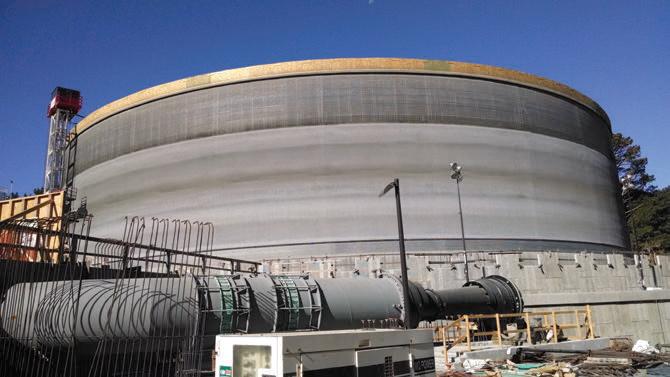
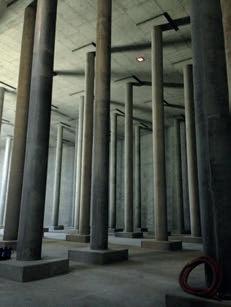



3,200/page RM 3,200/page
Full-Page, Full-Colour Advertisement
This one-time-only special rate o er is for new advertisers.
Space availability is subject to booking on a first-come-first-served basis.
Clients will provide ready-to-print artwork in PDF format with 300dpi.
Full page: 210mm x 285mm, 5mm extra bleed sizes for 4-sided with crop mark.
Advertising space must be utilised before 31 December 2023.
*Please note that the above rate will be subjected to 6% SST. For overseas advertisers, an additional 25% will be charged.
Rate shown above excludes 15% advertising agency commission.
Payment term: Full advance payment.
Artwork submission deadline is on (or before) the 1st week of the prior month of publication. After the material deadline, no cancellation or alteration to the advertisement will be entertained.
Any cancellation after signing the advertising order will result in a 50% penalty charge. The publisher reserves the right to edit, revise or reject any advertisement deemed unsuitable or inappropriate.
JURUTERA has an estimated readership of 200,000 professionals. Our esteemed readership consists of certi ed engineers, decision making corporate leaders, CEOs, government o cials, project directors, entrepreneurs, project consultants, engineering consulting rms and companies involved with engineering products and services. Circulation & Readership Pro le

MAJLIS BAGI SESI 2023/2024 (IEM COUNCIL SESSION 2023/2024)
YANG DIPERTUA / PRESIDENT
Ir. Prof. Dr Norlida bt Buniyamin
TIMBALAN YANG DIPERTUA / DEPUTY PRESIDENT
Ir. Prof. Dr Jeffrey Chiang Choong Luin
NAIB YANG DIPERTUA / VICE PRESIDENTS
Ir. Mohd Khir bin Muhammad, Ir. Prof. Dr Tan Chee Fai, Ir. Abdul Razak bin Yakob, Ir. Yau Chau Fong,
Ir. Dr Siti Hawa binti Hamzah, Ir. Fam Yew Hin, Ir. Chen Harn Shean
SETIAUSAHA KEHORMAT / HONORARY SECRETARY
Ir. Prof. Dr Zuhaina binti Zakaria
BENDAHARI KEHORMAT / HONORARY TREASURER
Ir. Assoc. Prof. Dr David Chuah Joon Huang
BEKAS YANG DIPERTUA TERAKHIR / IMMEDIATE PAST PRESIDENT
Ir. Ong Ching Loon
BEKAS YANG DIPERTUA / PAST PRESIDENTS
Y.Bhg. Academician Tan Sri Datuk Ir. (Dr) Ahmad Zaidee bin Laidin, Y.Bhg. Dato’ Paduka Ir. Hj. (Dr) Keizrul bin Abdullah, Y.Bhg. Academician Emeritus Tan Sri Dato’ Ir. Prof. Dr Chuah Hean Teik, Y.Bhg. Dato’ Ir. Lim Chow Hock, Ir. Dr Tan Yean Chin
WAKIL AWAM / CIVIL REPRESENTATIVE
Ir. Tu Yong Eng
WAKIL MEKANIKAL / MECHANICAL REPRESENTATIVE
Ir. Ng Yong Kong
WAKIL ELEKTRIK / ELECTRICAL REPRESENTATIVE
Ir. Mohd. Aman bin Hj. Idris
WAKIL STRUKTUR / STRUCTURAL REPRESENTATIVE
Ir. Dr Tan Kuang Leong
WAKIL KIMIA / CHEMICAL REPRESENTATIVE
Ir. Dr Chong Chien Hwa
WAKIL LAIN-LAIN DISPLIN / REPRESENTATIVE TO OTHER DISCIPLINES
Ir. Assoc. Prof. Dr Wong Yew Hoong
WAKIL MULTIMEDIA DAN ICT / ICT AND MULTIMEDIA REPRESENTATIVE
Ir. Assoc. Prof. Dr Lai Khin Wee
WAKIL JURUTERA WANITA / WOMEN ENGINEERS REPRESENTATIVE
Ir. Noorfaizah binti Hamzah
WAKIL BAHAGIAN JURUTERA SISWAZAH / YOUNG ENGINEERS SECTION REPRESENTATIVES
Mr. Muhammad Ashiq Marecan bin Hamid Marecan, Grad. IEM, Mr. Lim Yiren, Mr. Darshan a/l Balasubramaniam, Grad. IEM, Mr. Ooi Wei Chien, Grad. IEM, Ms. Ong Ye Shian, Grad. IEM
AHLI - AHLI MAJLIS / COUNCIL MEMBERS
Ir. Dr Vigna Kumaran a/l Ramachandaramurthy (casual vacancy for Ir. Dr Siti Hawa binti Hamzah for 1 session), Ir. Assoc. Prof. Dr Lee Tin Sin, Ir. Mah Way Sheng, Ir. Sreedaran Raman, Ir. Lee Cheng Pay, Ir. Dr Kannan a/l M. Munisamy, Ir. Dr Siow Chun Lim, Ir. Wong Chee Fui, Ir. Ts. Assoc. Prof. Dr Hum Yan Chai, Ir. Tiong Ngo Pu, Ir. Rusnida binti Talib, Ir. Prof. Dr Lau Hieng Ho, Ir. Muhammad Azmi bin Ayub, Ir. Arul Hisham bin Abdul Rahim (casual vacancy for Ir. Fam Yew Hin - for 2 sessions), Ir. Razmahwata bin Mohd Razalli, Ir. Simon Yeong Chin Chow, Ir. Dr Chan Seong Phun, Ir. Yam Teong Sian, Ir. Kwok Yew Hoe, Ir. Dr Lee Choo Yong, Ir. Sharifah Azlina binti Raja Kamal Pasmah, Ir. Ts. Dr Wan Syakirah binti Wan Abdullah, Ir. Dr Mui Kai Yin, Ir. Shamil bin Abu Hassan, Ir. Wan Rizaluddin Abdullah bin Wan Ali, Ir. Prof. Dr Lam Wei Haur (casual vacancy for Ir. Prof. Dr Zuhaina bt Zakaria for 3 sessions) AHLI - AHLI MAJLIS JEMPUTAN / COUNCIL MEMBERS BY INVITATION
Ir. Lai Sze Ching, Ir. Gopal Narian Kutty, Y.Bhg. Dato’ Prof. Ir. Dr Mohd Hamdi bin Abd Shukor PENGERUSI CAWANGAN / BRANCH CHAIRMAN
1. Pulau Pinang: Ir. Chan Wah Cheong
2. Selatan: Ir. Thayala Rajah s/o Selvaduray
3. Perak: Ir. Assoc. Prof. Dr Nursyarizal bin Mohd Nor 4. Pahang: Ir. Ab Rahman bin Hashim
5. Kedah-Perlis: Ir. Roshasmawi bin Abdul Wahab
6. Negeri Sembilan: Ir. Shahrin Amri bin Jahari
7. Kelantan: Ir. Abrizan bin Abdul Kadir
8. Terengganu: Ir. Mazlan bin Che Ku Ahmad
9. Melaka: Ir. Ong Yee Pinn
10. Sarawak: Ir. Sim Hui Kheng, Stephanie
11. Sabah: Ir. Chin Tet Fu, Willy
12. Miri: Ir. Chong Boon Hui
AHLI JAWATANKUASA INFORMASI DAN PENERBITAN/ STANDING COMMITTEE ON INFORMATION AND PUBLICATIONS 2023/2024
Pengerusi/Chairman: Ir. Abdul Razak bin Yakob Naib Pengerusi/Vice Chairman: Ir. Dr Siow Chun Lim Setiausaha/Secretary: Ir. Ts. Assoc. Prof. Dr Hum Yan Chai Ketua Pengarang/Chief Editor: Ir. Abdul Razak bin Yakob Pengarang Prinsipal Buletin/ Principal Bulletin Editor: Ir. Razmahwata bin Mohamad Razalli Pengarang Prinsipal Jurnal/Principal Journal Editor: Ir. Ts. Assoc. Prof. Dr Teo Fang Yenn Pengerusi Aplikasi Mudah Alih IEMGo/IEMGo Mobile Application Chairman: Ir. Dr Bhuvendhraa Rudrusamy Pengerusi Penglibatan Ahli/Members Engagement Chairperson: Ir. Rusnida binti Talib Pengerusi Pusat Sumber/Resource Centre Chairman: Ir. Dr Kannan a/l M. Munisamy
Ahli-Ahli/Committee Members: Ir. Ong Guan Hock, Ir. Lee Chang Quan, Ir. Lau Tai Onn, Ir. Dr Oh Seong Por, Ir. Yee Thien Seng, Ir. Dr Lee Choo Yong, Ir. Ts. Dr Tan Kim Seah, Ir. Assoc. Prof. Dr Lee Tin Sin, Dr Sudharshan N. Raman, Grad. IEM, Ms. Michelle Lau Chui Chui, Grad. IEM, Ir. Tu Yong Eng, Dr Nor Ilia Anisa Aris, Grad. IEM, Mr. Muhd Ashiq Marecan bin Hamid Marecan, Grad. IEM, Mr. Chuah Pei Lim, Grad. IEM
LEMBAGA PENGARANG/EDITORIAL BOARD 2023/2024
Ketua Pengarang/Chief Editor: Ir. Abdul Razak bin Yakob Pengarang Prinsipal Buletin/ Principal Bulletin Editor: Ir. Razmahwata bin Mohamad Razalli Ahli-ahli/Committee Members: Ir. Dr Siow Chun Lim, Ir. Lau Tai Onn, Ir. Ong Guan Hock, Ir. Yee Thien Seng, Ir. Dr Oh Seong Por, Ir. Ts. Assoc. Prof. Dr Teo Fang Yenn, Dr Sudharshan N. Raman, Ir. Tu Yong Eng, Ir. Lee Chang Quan,Ir. Dr Lee Choo Yong, Ir. Ts. Dr Tan Kim Seah, Ms. Michelle Lau Chui Chui, Grad. IEM
Secretariat: Janet Lim, Nurul Aida binti Mustafa, Nur Illyarnie binti Rosman
THE INSTITUTION OF ENGINEERS, MALAYSIA Bangunan Ingenieur, Lots 60 & 62, Jalan 52/4, P.O. Box 223, (Jalan Sultan), 46720 Petaling Jaya, Selangor Darul Ehsan. Tel: 603-7968 4001/4002 Fax: 603-7957 7678 E-mail: sec@iem.org.my Homepage: http://www.myiem.org.my
of Landslides in
(1961-2022)
Slope Engineering in Tropical Environment: A Malaysian Context
Forums
IEM Online Forum on Landslide
International Womens Day Forum: Women Leading Innovation & Technology
IEM Golf Tournament 2023
ENGINEER and MARVEX 2023: A Resounding Success with Over 10,300 Visitors from Close to 60 Countries






DIMENSION PUBLISHING SDN. BHD. [ 199701034233 (449732-T) ]
Level 18-01, PJX-HM Shah Tower, No. 16A, Persiaran Barat, 46050 Petaling Jaya, Selangor Darul Ehsan, Malaysia.
Tel: +(603) 7493 1049 Fax: +(603) 7493 1047
E-mail: info@dimensionpublishing.com
Website: www.dimensionpublishing.com
CHAIRMAN
ROBERT MEBRUER
CEO/PUBLISHER
PATRICK LEUNG
GENERAL MANAGER
SHIRLEY THAM ● shirley@dimensionpublishing.com
HEAD OF MARKETING & BUSINESS DEVELOPMENT
JOSEPH HOW ● joseph@dimensionpublishing.com
PRODUCTION EDITOR
TAN BEE HONG ● bee@dimensionpublishing.com
CONTRIBUTING WRITERS
PUTRI ZANINA ● putri@dimensionpublishing.com
HANNA SHEIKH MOKHTAR ● hanna@dimensionpublishing.com
SENIOR GRAPHIC DESIGNER
SOFIA HANIS ● sofia@dimensionpublishing.com
GRAPHIC DESIGNER
NICOLE THENG ● nicole@dimensionpublishing.com
ADVERTISING CONSULTANTS
THAM CHOON KIT ● ckit@dimensionpublishing.com
ACCOUNTS CUM ADMIN EXECUTIVE
YEN YIN ● yenyin@dimensionpublishing.com
For advertisement placements and subscriptions, please contact: DIMENSION PUBLISHING SDN. BHD. [ 199701034233 (449732-T) ]
Level 18-01, PJX-HM Shah Tower, No.16A, Persiaran Barat, 46050 Petaling Jaya, Selangor Darul Ehsan, Malaysia.
Tel: +(603) 7493 1049 Fax: +(603) 7493 1047 E-mail: info@dimensionpublishing.com
Subscription Department E-mail: info@dimensionpublishing.com
JURUTERA is published and printed monthly by Dimension Publishing Sdn. Bhd.
JURUTERA MONTHLY CIRCULATION: OVER 50,000 MEMBERS
Submission or placement of articles in JURUTERA could be made to the:Chief Editor
THE INSTITUTION OF ENGINEERS , MALAYSIA (IEM) Bangunan Ingenieur, Lots 60 & 62, Jalan 52/4, P.O. Box 223 (Jalan Sultan), 46720 Petaling Jaya, Selangor. Tel: +(603) 7968 4001/4002 Fax: +(603) 7957 7678 E-mail: pub@iem.org.my or sec@iem.org.my IEM Website: http://www.myiem.org.my
© 2023, The Institution of Engineers, Malaysia (IEM) and Dimension Publishing Sdn. Bhd.
PUBLICATION DISCLAIMER
The publication has been compiled by both IEM and Dimension with great care and they disclaim any duty to investigate any products, process, services, designs and the like which may be described in this publication. The appearance of any information in this publication does not necessarily constitute endorsement by IEM and Dimension. There is no guarantee that the information in this publication is free from errors. IEM and Dimension do not necessarily agree with the statement or the opinion expresssed in this publication.
COPYRIGHT
JURUTERA Bulletin of IEM is the official magazine of The Institution of Engineers, Malaysia (IEM) and is published by Dimension Publishing Sdn. Bhd. The Institution and the Publisher retain the copyright over all materials published in the magazine. No part of this magazine may be reproduced and transmitted in any form or stored in any retrieval system of any nature without the prior written permission of IEM and the Publisher.

by Ir. Dr Chan Swee Huat Chairman, Geotechnical Engineering Technical Division
Frequent rainstorms in Malaysia have made the hilly terrains prone to landslide. Slope safety and landslide mitigation is probably one of the more common and critical geotechnical issues that many Malaysians are concerned about. It is, however, practically hard, or almost impossible even, to totally prevent landslide. It is important to assess and manage landslide risks, so that appropriate and practical measures can be taken to minimise possible damages caused by landslide. It is important to create awareness of slope safety among all stakeholders, including local authorities, developers, consultants, contractors and communities. With this in mind, the Geotechnical Engineering Technical Division (GETD) has dedicated the October 2023 issue of JURUTERA Bulletin to its journey on slope safety and landslide risk management.
For the past two years, GETD has held a landslide forum, several technical talks and pre-AGM talks to draw attention to landslides and slope safety. In addition, a competition on geotechnical solutions for landslide was organised for civil engineering undergraduates to grow their interest and to encourage participation in slope engineering.
In 2002, IEM issued a Position Paper on hillside development and this was further updated in 2009 with a more comprehensive list of recommendations prepared to permit the identification and mitigation of circumstances that could lead to potential landslide hazards in the country.
With all these efforts, GETD hopes the promotion of slope safety and landslide mitigation in Malaysia can be positively advanced.
by Ir. Razmahwata bin Mohamad Razalli Principal Bulletin Editor
Aseven-member team was the backbone of the IEM 64th Annual Dinner preparations. They assisted the Organising Committee in table sales, arranged for the printing of the programme book and liaised with the hotel on the overall arrangements and flow for the whole dinner. All these were done over and above their regular duties such as arranging talks, courses and seminars.

For one month prior to the dinner date, staying back after working hours was the norm. They are all unsung heroes who had worked hard behind the scenes and who we should appreciate.
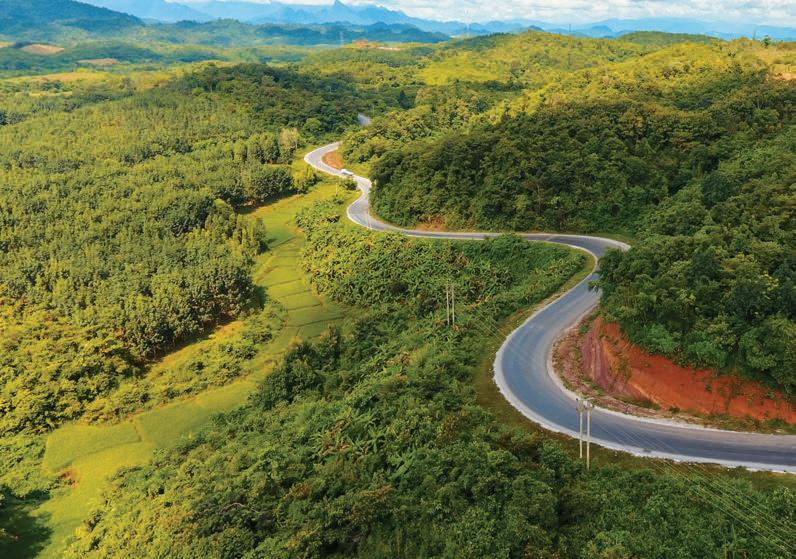
Creating awareness about slope safety and landslide risk management is a vital step in reducing the impact of landslides on communities, infrastructure, and the environment. By educating the public and promoting proactive measures, we can mitigate the loss of lives and property associated with landslides.
JURUTERA interviewed several geotechnical engineering experts in the field, including Ir. Dr Haji Ahmad Shukri bin Haji Abd. Rashid from JKR
Cerun, Ir. Dr Soo Kian Sin from OPUS Consultants (M) Sdn.
Bhd., and Ir. Prof. Dr Haji Ramli bin Nazir from UTM, to learn more about slope safety and landslide risk management.
QWhat are the roles that the different stakeholders can play to mitigate landslide risks and promote slope safety?
Ir. Dr Haji Ahmad Shukri bin Haji Abd. Rashid (JKR): Mitigating landslide risks and promoting slope safety requires a collaborative effort from various stakeholders, with each playing an essential role. These stakeholders include:
1. Government & Local Authorities: The government agencies – for example, Kementerian Perumahan Kerajaan Tempatan, Kementerian Sumber Asli dan Alam Sekitar, Jabatan Kerja Raya
(JKR), Jabatan Pengairan Saliran, Jabatan Mineral & Geosains (JMG) etc. – can extensively formulate and enforce regulations and building codes to ensure safe land development and construction practices in landslide-prone areas. This includes establishing Act, Law, Policy and Guidelines for high terrain development planning such as current Manual OSC 3.0 Plus (Proses dan Prosedur Cadangan Pemajuan Serta Pelaksanaan Pusat Setempat: OSC), (KPKT), Garis Panduan Penyelenggaraan Cerun di Semenanjung Malaysia (2006), Jabatan Kerja Raya Malaysia (JKR), Garis Panduan Pembangunan Tanah Tinggi (2005), Kementerian Sumber Asli dan Alam Sekitar (KSAAS), etc.
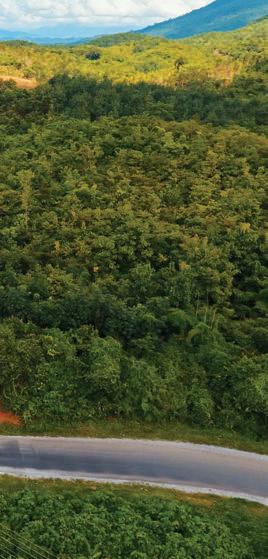
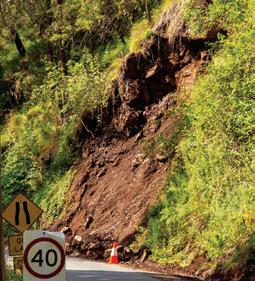
the existing road slope infrastructure is maintained by concessionaires with specific job scopes of slope routine maintenance with prevention and corrective works which include updating the Slope Data Risk Management for Federal and State Networks. The government, either the Public Works Department or local councils, conducts slope awareness campaigns to educate the public on the risks and safety measures related to safe slopes; JKR, for example, promotes this through short educational message videos aired over local TV.
slopes and signs of failure in the neighbourhood. Such information will prompt residents to report signs of slope instability or erosion to local authorities. Residents can also engage in community-based initiatives to address erosion and promote sustainable land use practices.
4. Non-Governmental Organisations (NGOs) & Community Groups: By advocating for enhanced slope safety regulations and policies, NGOs and community groups can protect residents from the risks of a landslide. They can conduct knowledge training and workshops on cases of emergency for the residents.
Technical agencies such as JKR and JMG conduct extensive risk assessments and map landslideprone zones along 1,342.45km of road in Peninsular Malaysia, including 9,139 numbers of slopes. The output of establishing Linear Based Risk and Risk identified 26,791 slope locations in the whole country while Area Based Risk and Risk identified 254 slope risk categories in different locations with low, intermediate and high-risk slopes throughout road networks.
We can implement early warning systems to alert communities about potential landslide, for example installing 48 locations of Real-Time Rain Gauges in 9 states in the peninsula and continuous Robotic Total Station (RTS) and Global Navigation Satellite System (GNSS). Under JKR,
2. Civil Engineers & Geologists: Any slope development planning would have undergone extensive guidelines to be followed through geotechnical investigations, designing, expert advice and continuous slope safety monitoring evaluation. The existing guidelines enable professional engineers/geologists to fulfill the government’s need for any existing and future slope management. These guidelines help professional practitioners to access and explore the stability of slopes and to identify potential landslide hazards in any road or building development, especially for future construction projects in landslide-prone areas.
3. Community & Residents: Participating in public awareness programmes helps people understand the risks associated with landslide and to learn to respond to any slope warnings by following simple guidelines on existing slopes. The Local Municipal Council of Majlis Perbandaran Ampang Jaya, for example, has produced a simple pictorial booklet titled Guidelines on Slope Maintenance for Public, with basic maintenance knowledge on monitoring
5. Researchers & Academia: Studies can be conducted to better understand the factors which contribute to landslide as well as the mechanisms. Technologies and monitoring systems for early detection and prediction of landslide should be improved upon with R&D based on the current situation for better decision-making and policy formulation.
Ir. Prof. Dr Haji Ramli bin Nazir (UTM):
Safety is crucial in the case of landslide to prevent loss of life and property. Millions of ringgit have been lost due to slope failure. Even worse is the loss of life and possessions.
To reduce landslide risk, slope safety should be promoted through several stakeholders. The following are 5 key stakeholders which can contribute to reducing landslide risk and enhancing slope safety.
1. Governmental organisations such as MET, JMG and JKR.
2. Local authorities such as Majlis Daerah, Majlis Perbandaran and Dewan Bandaraya.
3. Experts such as geologists and engineers.
4. Private owners, including landowners and developers.
5. Members of the community such as NGOs.
Government organisations play a crucial role in ensuring slope safety. They must provide guidelines and regulations to prevent incidences of slope failure in landslide-prone areas. Any action connected to slope safety assessment research and monitoring is eligible for funding.
Local authorities control planning for land use and its development. They should collaborate with engineers and geologists to locate areas prone to landslide and then conduct hazard assessments. The local authorities and organisations directly involved in local developments must follow the guidelines provided. The local authorities must create a zoning system and construction guidelines with emphasis on slope safety and preventing landslide in high-risk areas.
Engineers and geologists can offer solutions to help reduce the risk of landslides. Ground characteristics, groundwater and slope stability must be properly evaluated during site investigations. The results can be used to build effective slope stabilisation techniques such as retaining walls, slope reinforcement and drainage systems. They play a crucial role in helping local authorities and landowners with guidelines for safe construction practices.
Private parties such as developers and landowners are responsible for the management of their own property. They must abide by all building laws and rules supporting slope safety. They can hire experts such as engineers and geologists to plan and assess slope stability and to recommend a monitoring programme. It is also their duty to maintain, watch over and report slope anomalies on their private land to the authorities.
Members of the community can contribute to slope safety programmes through societal awareness and education. They can take an active part in communitybased campaigns to raise awareness of the dangers of landslide and the value of slope stabilisation. They can help implement educational programmes including classroom
activities and workshops as well as offer to disseminate knowledge on landslide risks. Residents can check for signs of slope instability and report potential landslide to the appropriate authorities. They should also interact with local authorities and professionals to stay updated and take the required steps to maintain slope safety.
Ir.
Dr Soo Kian Sin (Opus (M) Sdn. Bhd.):
The roles of the various stakeholders in mitigating landslide risks and promoting slope safety can be summarised as follows:
Government agencies and authorities
Engineering practitioners and researchers
Universities, researchers and academicians
Establish policies, guidelines and procedures.
Assist the government to come up with policies, guidelines and procedures as well as to implement them.
Conduct research which can be applied to slope safety, such as landslide mechanism and travel distance. Provide training to practitioners.
Emergency response agencies Implement emergency preparedness, response and recovery of landslides effectively.
Highway concessionaires, JKR, local authorities, developers and private landowners
Inspect and maintain slopes according to policies and guidelines, establish best practices and implement risk assessment in their maintenance actions.
General public Be aware of slope hazard and risk as well as emergency preparedness and response.
In relation to the above, attention is directed to the National Slope Master Plan 2009-2023 which recommends 10 comprehensive thrusts comprising 34 strategies which are further broken down to 77 action plans with their associated
stakeholders, costs and timelines. These thrusts, which are mainly based on the landslide mitigation strategies identified by the US Geological Survey, encompass the following sectors:
• Policy and institutional framework
• Hazard mapping and assessment
• Early warning system and realtime monitoring
• Loss assessment
• Information collection, interpretation, dissemination and archiving
• Training
• Public awareness and education
• Loss reduction measures
• Emergency preparedness, response and recovery
• Research and development
The master plan was prepared by the Slope Engineering Branch (SEB) of JKR, with the involvement of various engineering consultants and relevant stakeholders. It was later revised and updated in 2016. However, many are still unaware of this master plan which is crucial in mitigating landslide risks and in identifying the roles and responsibilities of each stakeholder.
QPlease share your views on the development of slope safety in Malaysia. Is there anything lacking or which requires improvement?
Ir. Dr Haji Ahmad Shukri bin Haji Abd. Rashid (JKR): Malaysia faces many challenges in slope safety due to its topography and climate. The terrain and heavy rainfall make our country susceptible to landslide, which can result in significant human life and economic losses. Slope instability is often triggered by factors such as heavy rainfall, earthquake, volcanic activity, slope instability and anthropogenic (human) activities.
• Geological/topographical: Areas with steep slopes, loose or weak soil and rock formations which
are prone to weathering and erosion, are more susceptible to landslide.
• Climate/precipitation: Prolonged or intense precipitation can trigger landslide, particularly in areas with inadequate drainage.
• Vegetation cover: Vegetation plays a crucial role to stabilise slopes by absorbing rainfall and binding the soil together. Deforestation, improper land management and/or disturbances to the natural vegetation cover can increase the risk of landslide.
• Anthropogenic activities: Human activities such as construction, mining, deforestation and improper land use can alter the natural stability of slopes and increase the likelihood of landslide. Excavation, changes in groundwater levels and the construction of roads and buildings can contribute to landslide.
From 2021 to 2023, the slope cases as reported by JKR (data from Cawangan Kejuruteraan Cerun) show cases for Federal and State roads, including Governmental Premises slope failures. The averages for slope failure are 430 (Federal) and 215 (State) for roads and 141 for governmental buildings.
Although the number of cases exceeded 300 a year for Federal road slope cases, the government had performed extensive mitigation measures or corrective measures which included increasing the yearly budget allocation for Federal and State by RM56.54mil and RM91.30mil respectively. A total of 6931 slopes were repaired between 2010 and 2023. The number of repaired road slopes were 252 (Federal) and 242 (State).
Despite all these efforts, challenges remain. Rapid urbanisation and improper land development often result in slope instability. Maintenance of existing infrastructure and monitoring systems is essential to ensure their effectiveness over time. Furthermore, addressing socioeconomic factors such as
affordable housing and settlement planning, is crucial to preventing vulnerable populations from residing in high-risk areas.
Malaysia has progressively established slope safety and landslide risk mitigation, but there are still areas where improvements can be made to enhance overall safety and resilience. We have developed regulations and guidelines in place for slope safety, but enforcement can sometimes be a challenge. Ensuring strict compliance with these regulations during construction and development projects is essential to prevent unsafe practices which can lead to slope instability. Encouraging sustainable land development practices, such as green infrastructure and nature-based solutions, can help reduce the impact of urbanisation on slope stability and erosion.

Regular monitoring and maintenance of existing infrastructure, including drainage systems and slope stabilisation measures, are critical to their effectiveness. Neglecting maintenance can lead to the deterioration of protective measures, increasing the risk of landslide. Continuous updates and refinement of landslide risk mapping are necessary to account for changes in land use and environmental conditions. Proper zoning and landuse planning can also help prevent further development in high-risk areas. While efforts have been made to implement early warning systems, continuous improvement and expansion of these systems are vital. Warnings must reach residents in a timely and reliable manner to enable them to take appropriate actions in response to potential landslide events.
Public awareness and education campaigns should be ongoing to ensure that those living in landslide-prone areas understand the risks and know how to respond during emergencies. Encouraging community-based initiatives for
preparedness and response can significantly improve overall safety. Involving local communities in slope safety initiatives fosters a sense of ownership and responsibility. Engaging residents in decisionmaking processes will lead to more effective solutions tailored to their needs and concerns.
Continued research and innovations in slope stability, landslide prediction and mitigation techniques can contribute to better understanding and more effective solutions. Collaborations between academia, government and industry can facilitate the implementation of cutting-edge technologies.
Ir. Prof. Dr Haji Ramli bin Nazir (UTM):
After the Highland Tower incident in 1993, the development of slope safety in the country has grown dramatically. There are numerous regulations governing hillside development. Due to our geography, climate and land development methods, we and many other nations share similar problems with regards to slope safety. Infrastructure, communities and the environment are all at risk from slope failure, landslide and soil erosion. Most of the time, engineering solutions are used in conjunction with land use planning, monitoring and public education to increase slope safety. Consider the following factors as Malaysia’s slope safety grows:
1. Engineering and infrastructure: We have been spending money on slope failure mitigation engineering solutions such as reinforced retaining walls, slope stabilisation methods and appropriate drainage systems. Improving the design and construction as well as upkeeping of buildings, roads and other infrastructure on slopes are essential to minimising danger.
2. Regulations and guidelines: It is crucial that slope development regulations and guidelines are implemented and followed. For slope design and construction, Malaysia has rules and specifications. To improve slope safety, ongoing improvements and tight enforcement are crucial.
3. Early warning systems: Landslide can be lessened in severity by creating and deploying an efficient early warning system. For the purpose of forecasting probable landslide and sending out prompt alerts to communities, these systems involve monitoring weather patterns, soil moisture levels and other pertinent data.
4. Creating a thorough inventory of landslides and hazard maps can help identify places which are more likely to experience slope failure. Planning and development involving land use can benefit from this information.
5. Education & research: To develop novel solutions, ongoing research into slope stability, soil mechanics and related topics is essential. Campaigns for public education can also increase knowledge of the dangers of constructing and residing in sensitive locations.
6. Community involvement: Engaging with local groups in efforts to reduce risks on the slopes can result in greater success. Community members can help with preparations and response activities as well as offer insightful information about the local environment.
7. Considering climate change factors: We may need to reevaluate and modify slope safety measures after we consider the effects of climate change, particularly more extreme rainfall events, to account for shifting conditions.
There is still a lot that needs work and development. Potential difficulties and areas for development include:
• Ensuring that adequate slope design, construction and maintenance, regulations and norms are enforced more strictly.
• Fostering cooperation between government organisations, scientists, engineers and
local communities to create comprehensive, long-lasting slope safety policies.
• Increasing expenditure on cutting-edge equipment and monitoring systems to identify probable slope problems instantly.
• When planning for slope safety, we must consider climate change estimates to account for potential rainfall intensity and frequency increases.
The ability of the stakeholders to work together is crucial to close any regulatory or policy implementation gaps that may increase the danger of landslide.



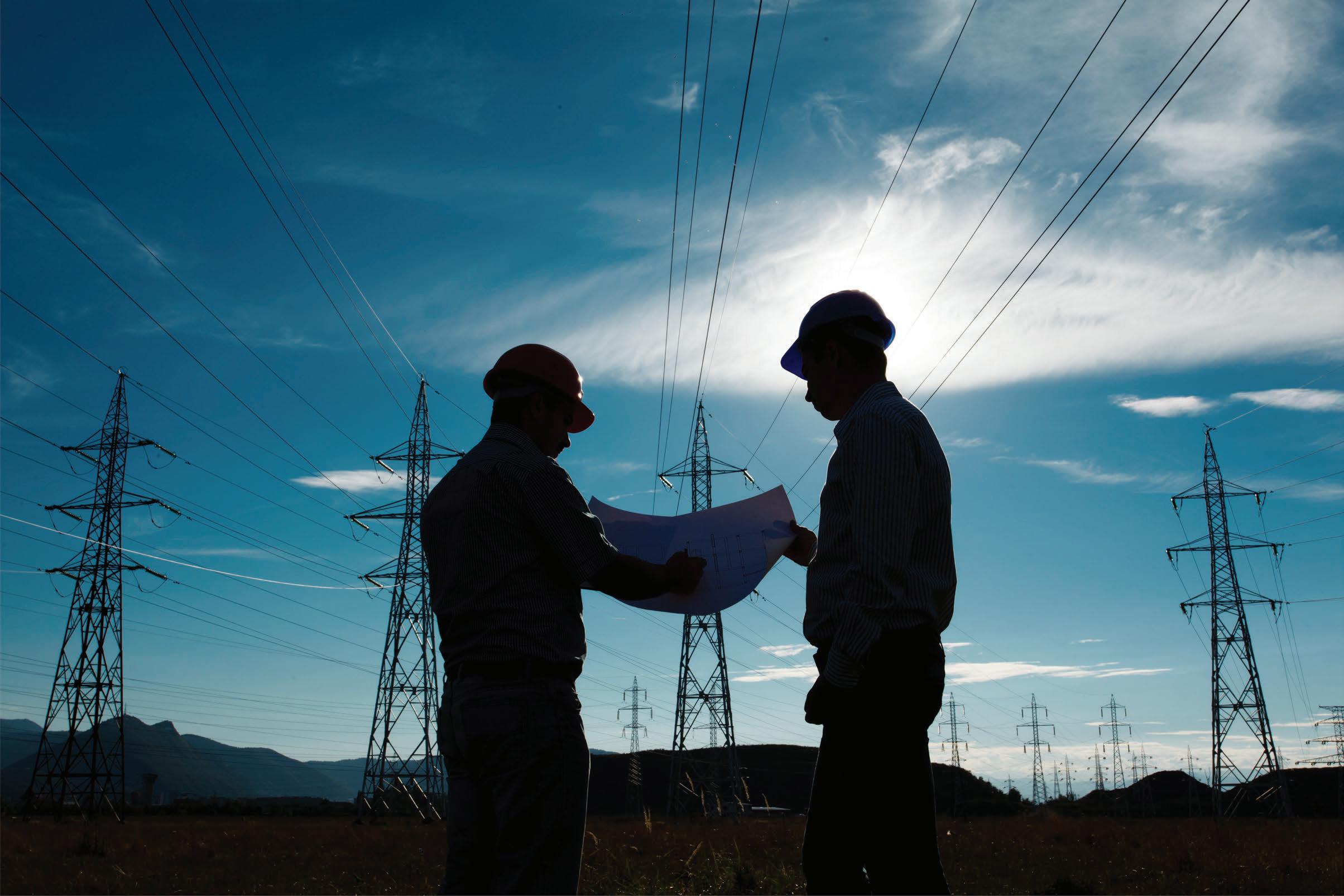


Ir. Dr Soo Kian Sin (Opus (M) Sdn. Bhd.):
Although there are many guidelines published by various agencies, there is still a lack of clear definition/ understanding of what constitutes a safe slope in terms of risk and consequence to failure. Other than the slope master plans issued and revised by JKR, there have been at least 8 guidelines issued by various agencies and local authorities with regards to hill site development, slope design and maintenance. However, these guidelines are not streamlined and sometimes may even seem to contradict one another, causing confusion among the practitioners. It is highly recommended that a central agency, similar to the Geotechnical Engineering Office (GEO) in Hong Kong, be established to decide on policies for planning, design, construction and maintenance for development on hilly terrain. Is the current state of science adequate to deal with the design and stability assessment of slopes?
QIr. Dr Haji Ahmad Shukri bin Haji Abd. Rashid (JKR): The design and stability assessment of slopes is continually evolving and improving. Significant advancements have been made in geotechnical engineering, geological studies and slope stability analysis techniques. However, the adequacy of the current state of science depends on several factors:
1. Understanding slope behaviour: The understanding of slope behaviour, including the complex interaction of geological, hydrological and geotechnical factors, has improved significantly. Advanced numerical modelling and analytical methods have helped engineers and geologists assess the stability of slopes more accurately.
2. Advancements in technology: Technological advancements have led to the development of sophisticated instruments for monitoring slope movements. These include inclinometers, piezometers and ground-based radar systems which enable real-time data collection and better assessment of slope behaviour. The availability of powerful geotechnical analysis software allows engineers to perform detailed slope stability analyses as they enhance the accuracy and efficiency of slope stability assessments.
3. Remote sensing and GIS: The integration of remote sensing data and Geographic Information Systems (GIS) provides valuable information for slope hazard mapping and risk assessment; these technologies contribute to better decision-making and landuse planning.
4. Research and case studies: Ongoing research and case studies help expand knowledge on slope behaviour and failure mechanisms which include learning from past slope failure experiences for future best practices and guidelines for design or slope assessment.
5. Climate change considerations: The incorporation of climate change considerations in slope stability analysis has become increasingly important as changing weather patterns can influence slope stability and erosion. Collaboration among researchers, engineers and geologists from different countries can promote the exchange of knowledge and expertise, leading to further improvements in slope stability assessment methods.
Continuous research, investment in technology, data collection and information sharing are required to continuously enhance the status of science. Furthermore, ongoing training in the area of slope stability ensures that professional practitioners
(engineers and geologists) are up to date on the newest approaches and techniques.
Ir. Prof. Dr Haji Ramli bin Nazir (UTM):
Over time, there has been substantial progress made in the science of geotechnical engineering, which encompasses slope design and stability assessment. Engineers and scientists now have a more solid grasp of soil mechanics, geology, hydrology and other pertinent fields which are important to slope stability studies. The risks connected with slope failures are being evaluated and mitigated using a variety of approaches, techniques and software tools.
The following are some factors to consider with reference to the status of science in slope design and stability assessment:
• Advanced analytical methods: Modern geotechnical engineering can simulate intricate interactions between soil, water and structural components thanks to powerful numerical modelling and analytic techniques. These technologies make it possible to anticipate slope behaviour more precisely under various circumstances.
• Understanding soil behaviour: Developments in soil mechanics have improved our knowledge of how diverse soil and rock types react to pressures and environmental factors. This information helps to make assessments of slope stability more precise.
• Geotechnical investigations: It is now much easier to carry out exhaustive geotechnical investigations involving subsurface excavation and laboratory testing. This makes it possible for engineers to acquire crucial information for planning and analysing slopes.
• Geospatial and remote sensing technologies: LiDAR and satellite images are two examples of remote sensing technologies
which offer useful information for mapping and monitoring slopes. Large-scale slope assessments and the detection of potential dangers are made possible by geospatial techniques.
• Engineers can now evaluate and manage the uncertainties related to slope stability thanks to advancements in the science of risk assessment. This includes scenario-based analysis and probabilistic techniques.
• Climate change considerations: In order to account for potential future difficulties, slope design and stability analyses have been updated to reflect the understanding of climate change consequences, including increasing rainfall intensity and the rise in sea level.
• Innovative techniques for slope stabilisation: Research and development activities have produced novel methods for slope stabilisation, including soil reinforcement, anchoring systems and bioengineering strategies that use vegetation to increase slope stability.
• Interdisciplinary collaboration: To fully examine slope stability and associated risks, geotechnical engineering frequently collaborates with other disciplines such as hydrology, meteorology and seismology. Even if a lot of progress has been accomplished, there are still obstacles to overcome and opportunities for more development, including:
• Data availability: Access to highquality geotechnical data is still essential for correct slope stability analysis. There are continuous efforts to enhance data gathering and sharing.
• Complex geological & geotechnical circumstances: Assessing slope stability in the presence of challenging geological and geotechnical conditions such as heavily weathered rock or shifting soil layers, can be difficult.
• Long-term monitoring: Slopes must be continuously monitored to spot variations in stability over time. Developments may further improve early warning skills in real-time monitoring systems.
• Education & training: To maintain high slope design and stability evaluation standards, engineers must get ongoing education and training in the newest analysis methods, software and best practices.
Ir.
Dr Soo Kian Sin (Opus (M) Sdn. Bhd.):
While there are continuous advancements in the state-of-theart knowledge in slope engineering, the current state of science is adequate to deal with slope design, construction and maintenance. The central issue is practical application of this knowledge and advancement in science.
Slope safety and design is a complex endeavour; it requires more than a rudimentary knowledge of soil mechanics theories. There are many factors that cause uncertainties in design including the inadequacy of soil investigation and testing, heterogeneity of soils, geological discontinuity, fluctuation in ground water regime and abnormal precipitation due to extreme weather. As such, it is highly recommended that experienced and competent geotechnical engineers be engaged to carry out the design and supervision work. It should be noted that the use of “factor of safety” in the design process is primarily to address the inherent myriad of uncertainties encountered.
For slope failures in Malaysia, the main triggering factor is rainfall while the main preparatory factor is due to inadequacy in design. Although there are still a lot of topics to be researched in soil mechanics and landslides, the theories have advanced much more than what are being practised. For example, most engineers do not know how to analyse the effects of rainfall on slopes although the theory
of unsaturated soil mechanics has already been introduced in 1977 and existing software used to analyse slope stability has the capability to do so.
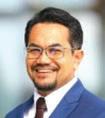
Ir. Dr Haji Ahmad Shukri bin Haji Abd Rashid Joined JKR in 2004 and is now Senior Superintendent Civil Engineer with Slope Engineering Branch. He pursued his PhD. in Civil Engineering at Universiti Teknologi PETRONAS.

Ir. Prof. Dr Haji Ramli bin Nazir Professional Engineer and a lecturer at the Geotechnical & Transportation Department, Universiti Teknologi Malaysia. He was a member of the Technical Committee on Eurocode 7 Malaysian Annex.

Ir. Dr Soo Kian Sin CEO/Director of Opus Consultants, with vast experience in geotechnical engineering, project, and asset management consultancy. Registered with BEM as PEPC. Also registered as ASEAN Chartered Professional Engineer and is a member of IEM, ACEM and MGS.























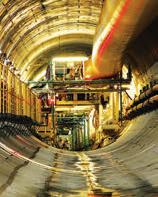

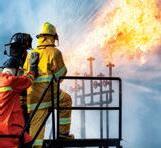






























Written and Prepared by:


PhD student at University of Nottingham Malaysia. His research topic is Risk-informed Approach for Rainfall-Induced Slope Instability Assessment.

Associate Professor in Risk & Reliability Engineering at University of Nottingham, UK.

Landslide has been identified as one of the most devastating geohazards in Malaysia and it poses significant threats to human vulnerability. Landslide occurrences can mainly be attributed to natural, geological and anthropogenic factors such as improper land use, poor design and unscrupulous construction practices. In terms of triggering factors, rainfall has been identified as the cause of most landslides in the country. It is not surprising that with the nation’s ongoing development and the increase in the volume of rainfall induced by global warming, the number of landslides and their consequences will intensify further. There is a need to quantitatively evaluate the societal risk of landslides to compare the severity of the hazard in Malaysia and in other nations.
Societal risk is defined as the risk of multiple fatalities or injuries in society as a whole, in which society would have to carry the burden of a landslide causing deaths, injuries, financial, environmental and other losses [1]. In Quantitative Risk Assessment (QRA), societal risk can be measured in terms of the cumulative probability (F) per year that N or more lives will be lost in accordance to fatal event scenarios [2]. The estimation of the societal risk can be determined by correlating, in a log-log scale, the annual frequency F of landslides causing N or more fatalities versus the number N of fatalities, provided that recorded events of past fatal landslides are available [3]. Such a curve reveals the rate of fatal landslides, the risk that society is currently living with and the overall safety level of the particular region.
Associate Professor in Geotechnical Engineering at University of Nottingham Malaysia.
Assistant Professor in Geotechnical Engineering at University of Nottingham Malaysia.
This paper compiles landslide inventories and the number of deaths caused by each landslide event in Malaysia between 1961 and 2022. Based on the data, the trends of landslide occurrences and fatalities are analysed. Subsequently, the F-N curve of landslide hazard in Malaysia is produced and this is compared with that of other nations. Understanding the societal risk level is useful for public authorities to implement appropriate QRA measures for the country.
The landslide inventory of Malaysia from 1961 to 2022 was compiled from the National Slope Master Plan 2009-2023 [4] and newspaper sources. The risk curve was analysed by using the method described by Van Westen et al . [5]. There were a total of 82 fatal landslide occurences between 1961 and 2022. Table 1 tabulates 15 major landslide events that has resulted in at least 10 deaths. The most devastating occurred on 26 December 1996 when a debris flow caused by Tropical Storm Gregg wiped out several villages in Keningau, Sabah, and claimed 302 lives. The event with the second-highest fatalities was the infamous Kuala Lumpur Highland Tower landslide in 1993 which resulted in 48 deaths. Table 1 shows that most of the deadly landslides occurred in the decade of 1990-2000.
Table 2 summarises the distribution of the number of fatalities for all the deadly landslides over the 62-year period. The data are used to calculate the F-N curve for Malaysian landslides. The frequency of an event (f) is computed by dividing the total number of events contributing to a
specific number of death (N) by the period on which they are based on (i.e. 62 years). The cumulative frequency (F) was then computed by summing up the frequency of each landslide event with the number of fatalities in descending order. In the 62-year period, landslides had claimed 778 deaths in Malaysia or an annual average of 12.5.
Table 1: Landslide Records in Malaysia (1961-2022)
1961 Ringlet, Cameron Highlands, Pahang 11 May 1961 16
1973 Kampung Kachang Putih, Gunung Cheroh, Ipoh, Perak 18 October 1973 42
1981 Kampung Kandan, Puchong, Selangor 4 March 1981 24
1993 Highland Towers, Hulu Kelang, Selangor 11 December 1993 48
1995 KM 39, KL - Karak Highway, Pahang 30 June 1995 21
1996 KM 1.5, KL-Karak Highway, Selangor 15 July 1996 15
1996 Perkampungan Orang Asli Pos Dipang, Perak 29 August 1996 38
1996 Taufan Gregg, Keningau, Sabah 26 December 1996
1999 Jalan Leila, Kg Gelam, Sandakan, Sabah 8 February 1999
2002 Kg. Ruan Changkul, Simunjan, Sarawak 28 January 2002
2011 Rumah Anak Yatim At-Taqwa, Hulu Langat, Selangor 21 May 2011
2015 Gunung Kinabalu, Sabah 5 June 2015
2017 Housing Project at Lengkok Lembah Permai, Tanjung Bungah, Penang 21 October 2017

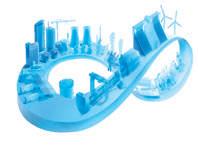




2017 Bukit Bendera area, Penang 5 October 2017 10 2022 Batang Kali, Selangor 16 December
Table 2: Distribution of Number of Fatalities of Landslide Events in Malaysia (1961-2022)













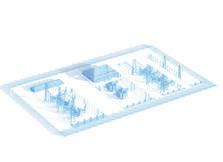

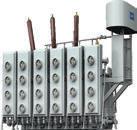









Figure 1 shows the trend of landslide events, number of deaths and cumulative number of deaths over the study period. Data prior to Malaysia’s Independence were not available, which restricted the computation of actual landslide frequencies in the country.
The gradient of the curve was almost flat from 1961 to the beginning of the 1990s. A significantly steeper gradient of the cumulative deaths, coupled with frequent landslide occurrences, began in the 1990s, which could be attributed to the active development of hilly terrains as low-lying land became scarce [6]. From late 1990s to 2020s, there was a high frequency of landslides but most were not as deadly as those that occurred in the early-to-mid-1990s. These results showed that landslide occurrences were inevitable under the increasing pressure of hillside development due to land scarcity. Nevertheless, with proper landslide control measures and risk management plans enforced by the Public Work Department, the Department of Mineral & Geoscience Malaysia and local authorities, the number of fatalities caused by landslides and the probability of a massive landslide were successfully minimised.
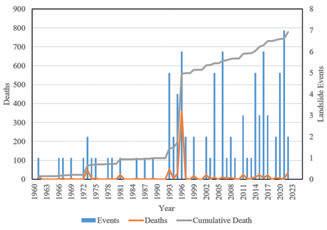
Figure 2 shows the plot of cumulative annual frequency (F) versus the number of fatalities (N) associated with fatal landslide occurrences in Malaysia and other countries on a log-log scale, known as the F-N curve. The F-N curve was employed in the present study to assess and compare the frequency of fatal landslides and their consequences in Malaysia with those of other countries around the world.
The landslide F-N curve for Malaysia can be divided into 3 segments. The first corresponded to low casualty (i.e. 1-1.5 deaths) and high-frequency landslides. The annual frequency was slightly above one, i.e. there was at least one landslide resulting in 1-1.5 deaths annually. The second
segment corresponded to landslides with between 10 and 100 casualties. The associated annual frequency varied between 0.03 and 0.2. The third segment corresponded to high casualty (> 100 deaths) and low frequency events. The annual frequency ranged from 0.03 to 0.01 (i.e. once in 30-100 years).

It was apparent from Figure 2 that the overall F-N curve for Malaysia was close to those of Italy, Hong Kong, Portugal and Canada. In particular, the frequency of landslides causing 1 death in Malaysia was almost identical to that of Hong Kong (F = slightly above 1) and they intersected again at the point of N = 42 and F = 0.05. It should also be noted that Colombia, a tropical country with intense rainfall like Malaysia, shared a similar gradient and pattern of F-N curve as Malaysia, albeit at higher frequencies.
To provide further insights into the societal factors contributing to the trends of landslide F-N curve in Malaysia, Table 3 compares the population density, annual rainfall intensity, gross national income (GNI), and value of statistical life (VSL) for Malaysia with those of countries that share similar trends of F-N curves. Although the population density of Hong Kong (7,096 people/sq km2) was significantly higher than that of Malaysia (99 people/ sq km2), the landslide risk in Malaysia was still marginally higher than that of Hong Kong, as indicated by the F-N curve plotted on higher frequencies. This could be attributed to the more matured and advanced landslide risk management system implemented in Hong Kong, as well as its higher VSL and GNI compared to Malaysia. According to Winter and Bromhead [7], countries with high economic power are willing and able to spend more on preventive measures against landslides.








From Table 3, it was apparent that Malaysia, Hong Kong, Italy and Colombia shared an almost identical slope of F-N curve (-0.79 to -0.86). This implied that there might be similarities in terrain, land use, rainfall conditions and landslide preventive measures in these countries. It also indicated that most of these countries adopted a catastrophe aversion preference in their approach to landslide risk management, i.e. a greater control over events that potentially generated a large number of fatalities. Hong Kong, Italy and Colombia are known to be mountainous countries while in Malaysia, the terrain generally consists of coastal plains with hills and mountains in the interior. Owing to rapid development in Malaysia since the 1980s, low-lying areas for development have become increasingly scarce. Consequently, development on highlands or hilly terrain has increased, especially in areas with close proximity to densely populated cities, especially in the Klang Valley and Penang. Some landslide experts we interviewed stated that the landslide risk in Malaysia, especially in Penang island, is broadly similar to that in Hong Kong in the 1980s to 1990s.
Another factor that may have contributed to the similarity in landslide risk between Hong Kong, Italy, Colombia and Malaysia is the rainfall condition. Landslides in these countries are frequently triggered by extreme rainfall. Italy has a Mediterranean climate while Colombia, Hong Kong and Malaysia have tropical climate but all 4 countries receive a significant amount of rainfall throughout the year (Table 3).
This study investigates the trends, distribution and societal risk level of landslides in Malaysia between 1961 and 2022. The following conclusions have been drawn from the study:
i. Between 1961 and 2022, a total of 82 fatal landslide events were recorded in Malaysia, resulting in 778 deaths, averaging 12.5 lives annually.
ii. Landslides with a high number of fatalities occurred more frequently in the early-mid-1990s. With proper
measures and risk management plans implemented by the government and authorities, the frequency of catastrophic landslide events (those causing more than 10 casualties) was successfully reduced since late 1990s, although the frequency of small-scale fatal landslides was still high.
iii. From the landslide F-N curve that was developed from the study, Malaysia shared similar risk characteristics as Hong Kong, Italy and Colombia. These countries were characterised by mountainous terrain coupled with intense rainfall throughout the year.
iv. The occurrence of landslide in mountainous tropical countries like Malaysia is inevitable. However, with proper landslide risk management plans in place and adequate investment, the societal risk of landslides can be minimised, as demonstrated in those developed countries.
[1] AGS, “Guidelines for Landslide Risk Management,” J. News Aust. Geomech. Soc., vol. 42, no. 1, 2007.
[2] L. Cascini, S. Ferlisi, and E. Vitolo, “Individual and societal risk owing to landslides in the Campania region (Southern Italy),” Georisk, vol. 2, no. 3, pp. 125–140, 2008, doi: 10.1080/17499510802291310.
[3] A. Strouth and S. McDougall, “Historical Landslide Fatalities in British Columbia, Canada: Trends and Implications for Risk Management,” Front. Earth Sci., vol. 9, no. February, pp. 1–8, 2021, doi: 10.3389/ feart.2021.606854.
[4] Public Work Department Malaysia, "National Slope Master Plan 2009-2023", 2023.
[5] C. J. Van Westen et al., Multi-Hazard Risk Assessment. Distance Education Course Guide Book. Tokyo, Japan: United Nations University–ITC School on Disaster GeoinformationManagement (UNU-ITC DGIM), 2011.
[6] S. Jamaludin and A. N. Hussein, “Landslide hazard and risk assessment : The Malaysian experience,” Iaeg 2006, no. 455, pp. 1–10, 2006, doi: 10.13140/2.1.3472.4647.
[7] M. G. Winter and E. N. Bromhead, “Landslide risk: Some issues that determine societal acceptance,” Nat. Hazards, vol. 62, no. 2, pp. 169–187, 2012, doi: 10.1007/s11069-011-9987-1.



Written and Prepared by:

Dr Low Tian Huat
He obtained his Undergraduate degree, Master’s degree and PhD from Universiti Malaya. He is the director cum geotechnical principal of Mohd Asbi Associates Sdn Bhd. He has about 30 years’ experience in slope engineering and tropical soil.
Tropical residual soils are a common type of soil that covers more than three-quarters of the land in Peninsular Malaysia. Tropical residual soil can be defined as soil weathered in-situ, where the original rock structure is destroyed by weathering and has not been transported from its original location. In Malaysia, the parent materials for these soils are typically granite, basalt and other types of igneous rocks, as well as sedimentary rocks such as sandstone, limestone and shale. Over time, these rocks weather and break down into smaller particles, forming soil.
Malaysia, located in the equatorial region, is characterised by a tropical climate, with high temperatures and rainfall throughout the year. This and the diverse geology have given rise to various weathering processes and landforms.
We experience two distinct monsoon seasons characterised by heavy rainfall, leading to increased soil saturation and an elevated risk of slope failure. The tropical environment presents significant challenges in slope engineering and construction due to the unique soil characteristics and heavy rainfall patterns. As a result, specific engineering strategies are necessary to mitigate potential risks. A general textbook approach with soil investigation and limit equilibrium analysis will not be sufficient to address such complicated conditions.
In this article, we will explore how the tropical climate and characteristics of tropical soils affect slope stability in Malaysia. We will also discuss the necessary slope engineering strategies suitable for our tropical environment.
Soil thickness: As tropical residual soils in Malaysia are predominantly formed from igneous rocks such as granite and other related rocks, their hard and dense nature inherently resists weathering and erosion. However, under the humid and hot conditions of a tropical country such

Low Kinson
A geotechnical engineer at Mohd Asbi Associates Sdn. Bhd., he obtained his degree from Monash University Malaysia. He is presently engaged in projects encompassing slope design, landslide risks & hazards assessment and landslide early warning system.
as ours, the weathering process accelerates significantly, leading to the common occurrence of thick residual soil from these rock formations.
Areas with limited depth of tropical residual soils will experience a substantial impact on slope stability. Shallow soils make slopes more vulnerable to erosion and landslides due to the reduced capacity to absorb water and susceptibility to saturation. Furthermore, the limited depth of tropical residual soils also hinders its ability to retain moisture, further contributing to slope instability. Such conditions are prone to erosion and debris flow landslides.
Relict Discontinuities: Relict discontinuities in residual soils refer to geological features or structures present in the original rock formation prior to the weathering and erosion processes that transformed it into soil. These features are often preserved in the residual soil, although they may have been altered or partially filled with fine soil materials. Several common relict discontinuities can be observed in residual soils, such as bedding planes, joints, fractures, faults and folds.
The presence of relict discontinuities significantly influences the engineering properties of residual soils, including strength, stiffness, permeability and compressibility. Fractures or joints can weaken the soil and make it more susceptible to erosion, while faults or bedding planes can create zones of weakness that increase the risk of landslides or slope failures. Figure 1 shows an example of how relict discontinuities can cause unexpected slope failures.
For instance, Figure 2 depicts a trial trench at the site of the Sai Sha Road landslide (1998) in Hong Kong, where relict joints infilled with kaolin and manganese oxide can be observed. In conventional subsurface investigation works, these relict discontinuities are often overlooked in soil testing due to their weak properties. Strict supervision by the designer in the laboratory is crucial to avoid overlooking these discontinuities, as they may lead to an underestimation of slope stability. Continuous soil


sampling with azimuth reading helps to better understand the ground, especially in areas with adverse discontinuities.
Given the diverse relict discontinuities in tropical residual soils, it is essential to implement appropriate slope engineering strategies to address the associated challenges. Proper understanding and management of these discontinuities are essential for ensuring slope stability in tropical environments.
Malaysia’s tropical climate is characterised by high levels of rainfall throughout the year which significantly impact slope stability and soil behaviour. The amount of rainfall
varies across regions, with the east coast generally receiving more rainfall than the west coast. The rainfall is concentrated in two distinct monsoon seasons: The north-east monsoon from November to March and the south-west monsoon from May to September.
The high rainfall leads to soil saturation and increased pore water pressures, resulting in reduced shear strength and an elevated risk of slope failure. Intense rainfall events cause rapid water infiltration into the soil, leading to a sudden rise in pore water pressure and a corresponding decrease in soil shear strength.
The risk of slope failure due to prolonged rainfall is higher than that of high-intensity rainfall, especially when the soil is saturated or has limited drainage capacity. Prolonged rainfall can cause continuous soil saturation, significantly increasing pore water pressure and reducing the shear strength over time, making it more susceptible to failure. Prolonged rainfall also contributes to increased erosion and sediment transport, further weakening the slope and increasing the potential for failure. The catchment area above the slope also plays an essential role, as large catchment areas with prolonged rainfall can lead to higher groundwater levels, reducing slope stability. On the other hand, high-intensity rainfall primarily contributes to massive erosion due to high surface runoff, which may result in debris flow.
The timing of rainfall events is also crucial in slope stability. Antecedent rainfall runoff from previous events can contribute to the runoff yield of subsequent rainfall events, intensifying soil saturation and reducing shear strength. Consecutive rainfall events with antecedent runoff can further exacerbate soil saturation due to continuous water infiltration, increasing the risk of failure.
The impact of prolonged and high-intensity rainfall on slope stability depends on soil characteristics, such as permeability, porosity and clay content. Tropical residual soils with lower permeability tend to retain more water, making them more susceptible to slope failure during prolonged, high-intensity rainfall events. In such soils, the slow progression of the wetting front during rainfall events can result in prolonged and shallow soil saturation, leading to slope instability and erosion.
Slope Engineering Strategies
Design Method and Analytical Tools: In conventional approaches, limit equilibrium and finite element analyses are used to assess slope stability. However, to accurately represent the residual soil behaviour in a tropical environment, appropriate soil strength parameters must be used to consider the unique properties of tropical residual soils. Particularly, the weak soil strength along adverse discontinuities like relict joints and faults (with weak infilled materials) must be carefully assessed, especially in daylighting orientation. Consequently, traditional laboratory tests used to determine soil strength, such as triaxial or direct shear tests, may not yield accurate results under these conditions.

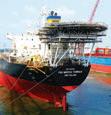
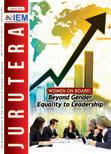

















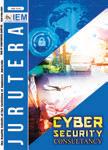
Engineers and geotechnical experts must consider the influence of the tropical climate on soil behaviour and should adopt appropriate testing methods, such as in-situ testing techniques and procedures to capture the unique response of the soil. Moreover, provision of strengthening measures such as soil nailing should be provided when relict discontinuities are observed during slope construction.
Furthermore, the effect of the wetting front in tropical climates is often overlooked in slope stability analysis. As mentioned in the previous section, the slow progression of the wetting front during rainfall events can result in prolonged and shallow soil saturation, leading to slope instability and erosion. To appropriately address the effect of the wetting front, catchment and seepage analysis should be carried out to determine the characteristics of the wetting front. Subsequently, results from these analyses can be included in the slope stability analysis to consider the loss of matric suction due to the wetting front and the contribution of additional load due to soil saturation in the wetting front zone.
Field Inspection and Geomorphological Mapping: Aside from the usual subsurface investigation works, field inspection and geomorphological mapping are essential for slope engineering in tropical environments. They provide valuable information on the site conditions, slope characteristics and potential risks, which may not be possible to pick up through subsurface investigation works.
One of the key examples of this is terrain analysis, which examines site topography, including the slope angle, aspect and shape. This information is essential for identifying potential landslide triggers and determining the most appropriate slope design and stabilisation measures.
Subsequently, a comprehensive hydrology analysis is vital in tropical climates, where heavy rainfall is common. Hydrology analysis involves studying the behaviour of water on and within the slope, including its movement, storage and discharge.
Geological mapping, which involves identifying and mapping the geological formations and structures on the site, is important for understanding the underlying geology and its impact on slope stability and identifying potential landslide triggers, such as the plane of weakness caused by relict discontinuities in tropical residual soils.
All data collected during the field inspection and geomorphological mapping should be further analysed and documented systematically. This information should affect slope design, stabilisation measures and maintenance plans. For example, the identified lineaments on site can generate a lineament density map, where higher density areas should consider a more conservative approach in slope design, accounting for any relict discontinuities in the residual soils.
Landslide/Rainfall Records: Landslide and rainfall records are essential data for slope engineering in tropical environments. These can help identify areas at higher risks
of landslides and provide information on the frequency and magnitude of rainfall events in tropical climates, which can help determine slope design parameters and maintenance requirements.
Landslide records should be reviewed to identify areas susceptible to landslides. This information can indicate slope design parameters and prioritise maintenance activities in higher-risk areas. Furthermore, historical landslide records can identify long-term trends and changes in slope behaviour, informing the necessary considerations in slope design. Rainfall records can provide information on the frequency and magnitude of rainfall events. This information can be used to design surface and subsurface drainage systems to manage rainfall runoff and prevent soil saturation. These records should be incorporated into risk assessment to identify areas at higher risk of landslides and have a bearing on the design and maintenance requirements for the slope.
The climate change effect shall be considered in slope engineering, as the increased rainfall intensity, temperature fluctuations, etc., from climate change will affect the dynamic of the slope stability.
Remote sensing technologies, such as satellite imagery, INSAR and LiDAR can be used to monitor slope behaviour changes and identify potential instability areas.
Monitoring and Maintenance: Monitoring and maintenance are essential to ensure the long-term stability and safety of slopes engineered in tropical environments. Slopes can be subjected to various environmental and geological factors which can affect their stability over time; regular monitoring and maintenance can help identify potential issues and prevent failures. A proper management plan, such as the Inspection, Monitoring, Maintenance & Repair (IMMR) plan, shall be implemented to effectively manage the slope stability of multiple slopes in an area.
Regular inspections should identify signs of slope instability, such as cracks, bulges or settlements. Inspections should be conducted after heavy rainfall or other weather events which may affect slope stability. Instrumentation, such as inclinometers, can be used to monitor the performance of the slope over time, informing changes in slope behaviour and providing early warning of potential failures. Surface and subsurface drainage systems should be maintained regularly, as blocked or damaged drainage systems can lead to soil saturation and an increased risk of landslides. Any sign of slope instability should be addressed immediately through repair and stabilisation measures.
Risk and Hazard Assessment: Landslides are a common natural disaster in Malaysia, especially in areas with tropical residual soils. As mentioned in the previous section, the weathering of underlying bedrock typically forms these soils and can be highly susceptible to landslides due to inherited adverse discontinuities with their low strength and cohesion.
Several factors must be considered to assess landslide risk and hazards in these areas. These include the geological and topographical characteristics of the area, climatic conditions and human activities.
A detailed site investigation should be carried out to assess landslide hazards, including geological mapping, soil testing and topographic surveys. This information can create a landslide susceptibility map, which identifies areas of high and low susceptibility to landslides. Once areas of high susceptibility are identified, geomorphological mapping and detailed site investigation can be assigned to assess the slope condition properly. Besides, mitigation measures can be implemented, focusing more on these landslide-prone areas. These may include slope stabilisation, drainage improvements and vegetation management for any slope engineering in the high susceptibility area.
Surface/Groundwater Management: Surface and groundwater management is a critical aspect of slope engineering in tropical environments, where heavy rainfall and high humidity can significantly increase the risk of landslides. Effective surface and groundwater management can help reduce soil erosion, increase slope stability and minimise the risk of landslides. It is important that the catchment and hydrology of the slopes is considered when designing the surface and subsurface drainage. Soil cover, such as vegetation, can help reduce runoff, preventing soil erosion.
Conclusion
Slope engineering in tropical residual soils and the tropical climate of Malaysia present unique challenges and considerations. The complex nature of tropical residual soils, characterised by their variability and susceptibility to landslide and erosion, requires a comprehensive understanding of their geotechnical properties and behaviour. The tropical climate, with its high rainfall and temperature, further exacerbates the instability of slopes and increases the risk of landslides.
In conclusion, the successful design and implementation of slope engineering projects in tropical residual soils and climate require a multidisciplinary approach, combining geotechnical engineering knowledge, environmental considerations and ongoing monitoring and maintenance. By adopting appropriate measures and techniques, engineers can mitigate the risks associated with slope instability and contribute to safe and sustainable infrastructure development in tropical regions.
[1] Campbell S.D.G. & Parry S. (2002). Report on the Investigation of Kaolin-rich Zones in Weathered Rocks in Hong Kong. (GEO Report No. 132), Geotechnical Engineering Office, Hong Kong.
Virtual One-Day Course on Highway Drainage Design
Date : 10 October 2023 (Tuesday)
Time : 9.00 a.m. - 5.30 p.m.
Venue : Digital Platform
Approved CPD : 7
Speaker : Ir. Chee Shai Choon
Technical Talk on Ground Improvement vs. Pile Foundations
Date : 11 October 2023 (Wednesday)
Time : 5.30 p.m. - 7.30 p.m.
Venue : Wisma IEM
Approved CPD : 2
Speaker : Mr. Jerome Racinais
Technical Visit to Smart Meter Operation Center (SMOC) TNB
Date : 12 October 2023 (Thursday)
Time : 8.45 a.m. - 1.00 p.m.
Venue : TNB Smart Meter Operation Center, Aras 3, Wisma TNB Jalan Timur, Petaling Jaya, Selangor
Approved CPD : 3
Webinar Talk on “SSGP KP 265 Gas Pipeline Installation Challengesin Mountainous Region”
Date : 14 October 2023 (Saturday)
Time : 9.00 a.m. - 11.00 a.m.
Venue : Digital Platform
Approved CPD : 2
Speakers : Ts. M Asmadi bin Mohamad : Ts. Mohd Amli bin Ismail
Heartiest Congratulations to Ir. Prof. Dr Leong Wai Yie for receiving the 2023 INWES Distinguished Woman in Engineering Award.
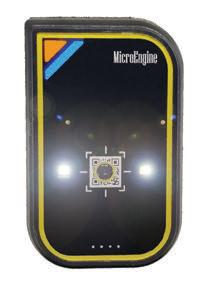




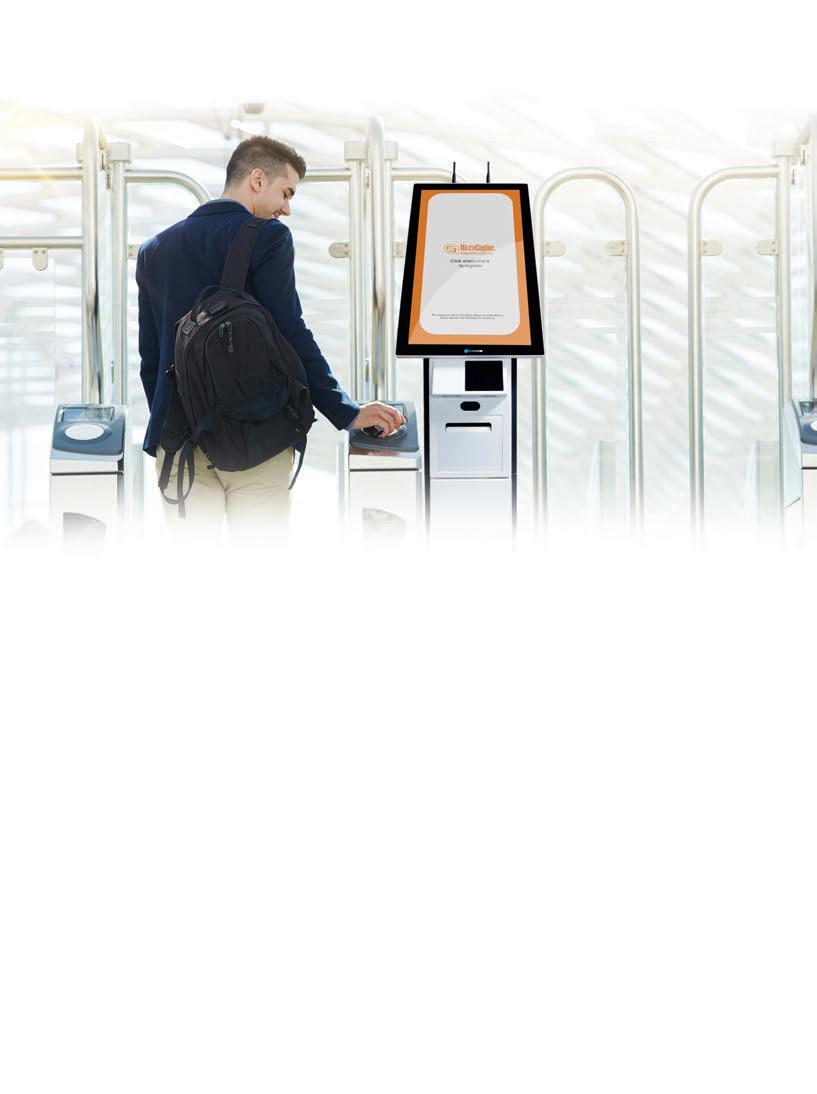


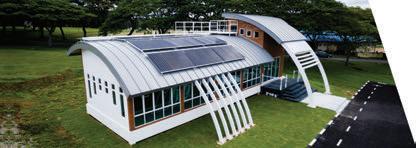


Written and Prepared by:


The IEM Geotechnical Engineering Technical Division (GETD) held an online forum to discuss the current state of landslide issues in Malaysia on 27-28 April 2022. Experts from various fields who joined the discussion included Dr Mohamad Niizar bin Abdurahman of Jabatan Kerja Raya (JKR) Cerun, Dr Ferdaus bin Ahmad of Jabatan Mineral & Geosains (JMG), Ir. Liew Shaw Shong of Association of Consulting Engineers (ACEM), Datuk Ir. Ho Han Sang Real Estate & Housing Developers Association (REHDA), Ir. Lee Peir Tien of Malaysian Geotechnical Society (MGS) and Ir. Dr Chan Swee Huat of IEM-GETD. Moderators were Ir. Sin Peng Tean and Ir. Yee Thien Seng; there were 122 participants. Several questions were discussed over the 2 days and the key points from the panel of experts have been summarised as follows:
What are your roles and observations on landslide? What are the constraints faced?
JKR Cerun
• Perform urgent slope repairs for federal and government sites, including state roads.
• Forensic investigation, mitigation works for high-risk slopes of state roads.
• Technical advice and consultancy to government agencies on hillside developments.
• Data collection or hazard and risk mapping based on federal and state roads.
• Act as secretariat for the national slope masterplan.
Constraints:
• Limited time for remedial work and to reopen the access to public.
• Allocation for remedial works.
• Manpower for extensive forensic investigation.


JMG
• Slope hazard and risk assessment to produce, develop and update the National Inventory on Slopes in order to produce a landslide map for the country.
• Develop guidelines on landslide and identify landslide hotspots.
• Address landslide issues on different platforms.
Constraints:
• Scarce data on landslides.
• Difficulty in gathering data in landslide zones hinders analysis and mitigation.
ACEM
• Consulting engineers provide proper slope engineering design and assure construction compliances to standards and guidelines.
Constraints:
• Limited budget and time for Site Investigation (SI) works.
• Slope issues involve areas outside the project boundary.
• Demarcation of responsibility and liability on slope safety.
• Authority requirements involving areas outside project boundaries, such as buffer zones.
• Lack of enforcement and unclear slope ownership.
REHDA
• Developers take care of slope stability.
Constraints:
• Budget for slope maintenance and monitoring.
• Competency among developers.
• Confinement of land boundaries.
• Higher rainfall intensity due to global warming.
MGS
• Geotechnical engineers skilled in soil mechanics to ensure sound slope designs.
Constraints:
• Though vital, the role of geotechnical engineers in slope design is often unrecognised by the public.
IEM-GETD
• Raise landslide risk awareness among stakeholders (local authorities, developers, consultants, contractors and communities).
• Train stakeholders to enhance slope engineering knowledge.
• Enable discussions through talks and forums for stakeholder engagement etc.
• Recommendations of policies, guidelines for government and local authorities.
Constraints:
• Limited budget
• Limited trainers
• Challenges in engaging all stakeholders
Concluding views from Panel of Experts
• Need a centralised agency agency for slopes to provide landslide hazard maps, subsoil information. To provide information for feasibility studies and to expedite development and design planning to allow more time for proper slope designs.
• Geological Survey Act mandates landowners to submit the SI report to JMG and information made accessible to the public.
What do you suggest with regards to laws and regulations to handle safety of hill land? How will these legal systems deal with the safety aspects of private slopes and public slopes?
JKR Cerun
• Acts and policies for slope design exist; key challenges lie in post-construction maintenance.
• Focus on maintenance and routine inspection of slopes.
JMG
• Climate change prompts maintenance schedule regulation update.
• Review regulations older than 10 years among government agencies and learned societies for up-todate and relevant regulations.
ACEM
• Laws comprehensive; owner/operator is ultimately responsible for slope safety.
• Establish a centralised agency for private and public slopes and have jurisdiction over private and government slopes.
• Contracts for land use must address legal liability and compliance, covering planning, design, construction, operation and rehabilitation.
REHDA
• Legal frameworks for slopes are established but are managed by various agencies (e.g. JKR at state roads and federal roads while municipal councils cover other areas). The various government agencies and REHDA should collaborate in handling this issue.
• Enforce maintenance laws, mindful of compliance expenses.
MGS
• Proposed a centralised federal slope control agency, a hill-site engineering agency under the Ministry of Housing & Local Government to oversee slope safety; this was recommended in the IEM position paper in 2002 and updated in 2009.
IEM-GETD
• IEM position paper (2002 and updated in 2009) on hill site development provided recommendations on the way forward for slope issues, forming a centralised Federal Agency for Control of Developments with Slopes (ACDS).
• ACDS shall investigate and advise the local authorities on approval and slope-related safety for future developments including adjoining slope and overseeing maintenance.
• ACDS consent required prior to development certification for occupation by local authorities.
Concluding views from Panel of Experts
• Strengthen enforcement of existing legal system and regulations.
• Form central federal ACDS based on IEM Hill-Site Development Position Paper to regulate slope matters.
• Community-based landslide mitigation helps government on slopes near each community.
Is the current state of science adequate to deal with stability of slopes?
JKR Cerun
Supporting Explanations:
• We have embraced current science and technology but must continue to adapt to evolving research and industry trends.
• Our experience is positive with the registry of 26,791 slopes along federal roads in the peninsula using
• Emphasis on both private and public slopes, including natural slopes. Note that natural slopes are not necessarily safe.
LIDAR and 200,000 km of state roads mapped.
Difficulties for Application:
• Cameron Highlands roads pose ongoing slope challenges due to geological and geotechnical engineering factors.
• Identification of failing slopes and specific failure locations remains difficult. Total rainfall depth of 97.5mm to 105mm is used as the criterion to warn residents at localities that are nearing the threshold for evacuation.
• Failures in natural slopes, especially in Jerai, frequently occurred at natural water bearing channels.
JMG
Supporting Explanations:
• Availability of state-of-the-art technologies, devices and software enables robust slope stability analyses.
Difficulties for Application:
• Budget and integrity limitations to project.
• Inability to obtain representative and reliable data of the actual site geology and geomorphology.
• Design requirements not implemented for construction.
• Naturally occurring geological materials too heterogeneous and data collected cannot be simplified for good slope stability analyses.
ACEM
Supporting Explanations:
• Global engineering framework continues to advance slope development.
• Engineering systems available improves slope stability.
• Urgent need for implementation of workable early warning systems to alert public on impending slope failures.
Difficulties for Application:
The unique triggering factor causing landslide is not obvious amid multiple contributing factors.
• Limitations in engineering theoretical framework means inability to determine which part of the slope will fail.
• Real life failure often occurs at specific spots, not the whole slope.
• Deep cut slopes undergo stress relief, resulting in swelling and softening problems where failures are suggested to mostly occur, such as along the Simpang Pulai-Cameron Highlands road.
• Placing monitoring instruments correctly is challenging for hazard warning purposes.
• Geological and soil strength variations complicate assessment.
• Propose terrestrial LIDAR or InSAR evaluations to help identify strategic locations on slopes to be monitored.
REHDA Not present.
MGS
Supporting Explanations:
• Soil mechanics or rock mechanics exist from long ago; tools available are also well established.
• Skilled personnel for proper slope design needed.
• Geotechnical engineers are crucial in slope design.
• LIDAR and AI can help enhance slope monitoring.
Difficulties for Application:
• Client involvement and support are vital.
• Correct tools in the hands of the wrong operator will yield incorrect results.
Supporting Explanations:
• Can be improved with continued advancements in knowledge, science and technology.
• In practice, slope safety (integrity) is indicated by Factor of Safety (FoS) accounting for uncertainties with load, soil parameters and analyses.
Difficulties for Application:
• Uncertainties in parameters to be used for stability analysis of a slope.
• FoS lacks failure probability indication.
• Challenge to calibrate required FoS for different clusters of slopes, soils, failure types, risks to life, economic risks etc.
• Improve geophysical survey interpretation for soil characterisation and uncertainty.
• Enhance sensing instruments and data acquisition for reliable slope monitoring.
Remarks by Moderator (Ir. Yee Thien Seng)
• Surprising that none of the panellists delved into fundamental engineering science, particularly soil mechanics such as softening and ageing effects which were addressed in the 52nd Rankine Lecture by Professor Malcolm Bolton and a brief report on this was published in the September 2013 issue of JURUTERA.
• Those interested in recent developments on a comprehensive logical framework for soil mechanics and slopes should take note on this.
• In the 1995 IEM Symposium on Hillsite Development: Engineering Practice & Local By-Laws, Dr E.W. Brand (Head of Geotechnical Control Office, Hong Kong) said Hong Kong engineers were not successful in installing instruments to monitor those slopes which subsequently failed.

Written and Prepared by:

On 8 March 2023, the Women Engineers Section (WE) of The Institution of Engineers, Malaysia (IEM), held a 2-hour online forum in support of the International Women’s Day themed DigitALL: Innovation & Technology for Gender Equality.
The event was aimed at showcasing the contributions of women engineers and women technologists to innovation and technology. Attended by women from various industries, the forum was held in line with the United Nations’ observance of International Women’s Day, which recognises and celebrates women who are leading the advancement of transformative technology and a digital future for all.
The event was moderated by Ir. Associate Professor EUR. Ing. Ts. Dr Syuhaida binti Ismail, Vice Chairman 2 (WE). It featured four speakers who shared their experiences and expertise in their respective fields. The first speaker was Ts. Ainarull Assikin binti Abdul Hadi, Managing Director of Consolidated Legend (M) Sdn. Bhd., who talked about her experiences as a woman engineer in the field of construction. She highlighted the importance of perseverance, resilience and a growth mindset in overcoming challenges and achieving success from a contractor’s perspective. She said women engineers have made significant contributions to the construction industry and play a vital role as female contractors. However, they continue to face challenges such as bias and discrimination in the male-dominated field.
She suggested several improvements, encompassing increasing diversity and inclusivity in the workplace. Additionally, creating increased awareness and advocacy for the contributions of women in construction can help shift perceptions and break down barriers for women engineers in the industry.
The second speaker was Dr Fairoza Amira binti Hamzah, Senior AI Engineer at Torum Technology Sdn. Bhd. She spoke about the role of women scientists in the Artificial Intelligence (AI) industry in creating a more gender-equal society. She highlighted the importance of diversity and inclusivity in AI development and implementation. She
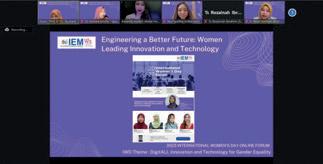

talked at length on women’s contributions in AI, Data Science and Machine Learning. She added that women scientists have been instrumental in addressing issues related to bias and fairness in AI systems, as well as promoting diversity and inclusivity in the development of AI technology. However, she said, women in AI continue to face challenges such as gender bias, lack of representation and recognition, and have limited opportunities for career advancement. To support the advancement of women scientists in the AI industry, efforts should be made to promote diversity, equity and inclusion in the workplace, to increase funding and resources for women-led AI research projects and to provide mentorship and networking opportunities for women scientists.
Our products:




The third speaker, Ir. Noor Hafizah binti Kusnin, Operation Director at AMR Environmental Sdn. Bhd., discussed five tips on cultivating innovation and technology in the organisation, especially for women engineers in the field of environmental engineering. She said innovation and technology are key drivers of growth and success in today’s fast-paced business world, especially in the environmental industry. As such, organisations need to cultivate a culture of innovation and technology to stay competitive and relevant. She said innovation can also help address complex environmental challenges and promote sustainability. By understanding the benefits of innovation, women leaders can motivate their teams to think creatively and develop new solutions. Apart from that, women leaders should also encourage their teams to think outside the box and to experiment with new ideas. Furthermore, she said, organisations should invest in the latest technologies and tools to improve efficiency, streamline processes and develop new solutions.
Finally, Ts. Rozainah binti Ibrahim, head of Business Development at CIDB IBS, offered insights into the latest developments in Industrialised Building System (IBS) technology which uses off-site manufacturing and prefabrication techniques and talked about how it can empower women in the construction industry. This method offers several benefits, including reduced construction time, lower costs, improved quality and enhanced safety. She said women engineers can play a vital role in advancing the adoption of IBS through vendor development programmes, training, events, exhibitions, marketplaces and project management consultancy.
With the participation of women in IBS, the construction industry can benefit from a more diverse and skilled workforce which, in turn, can lead to improved innovation, productivity and profitability. Additionally, by collaborating with women-owned businesses and entrepreneurs, the industry can support the growth and development of a more inclusive and sustainable construction ecosystem.
In conclusion, the International Women’s Day online forum was a great success and participants came away with valuable insights into how innovation and technology can create a more gender-equal society. The event, which served as a reminder of how women engineers and women technologists have contributed to advancing technology and engineering a better future for all, ended with participants taking part in a group photo session.

Tel : 603 6142 6638
Fax : 603 6142 6693
Email : jasonklc@nehemiah-grp.com
Email : julia@nehemiah-grp.com




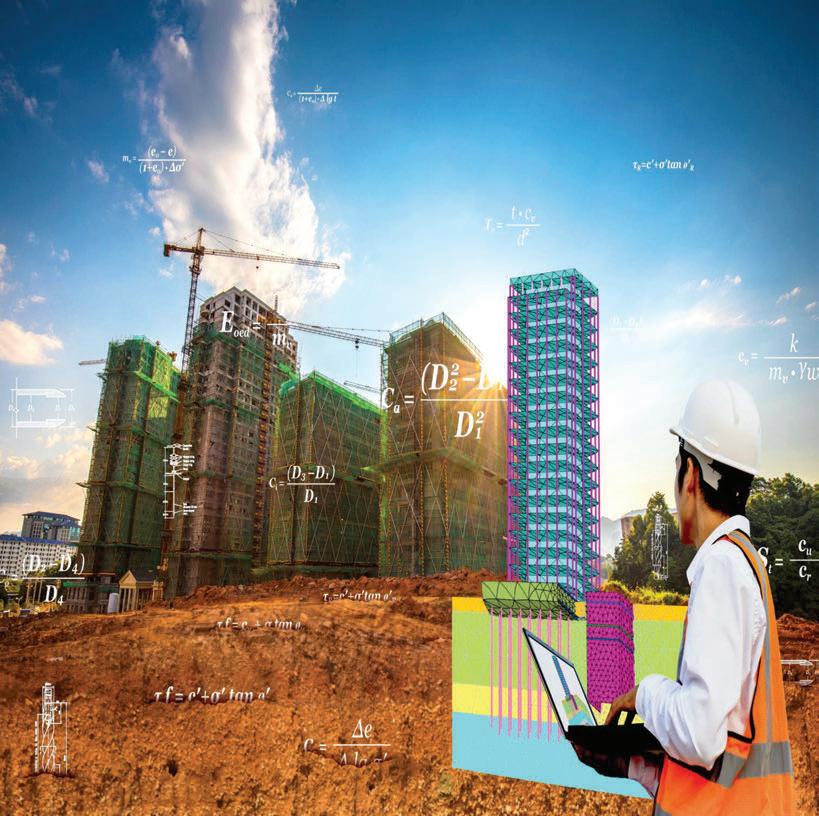
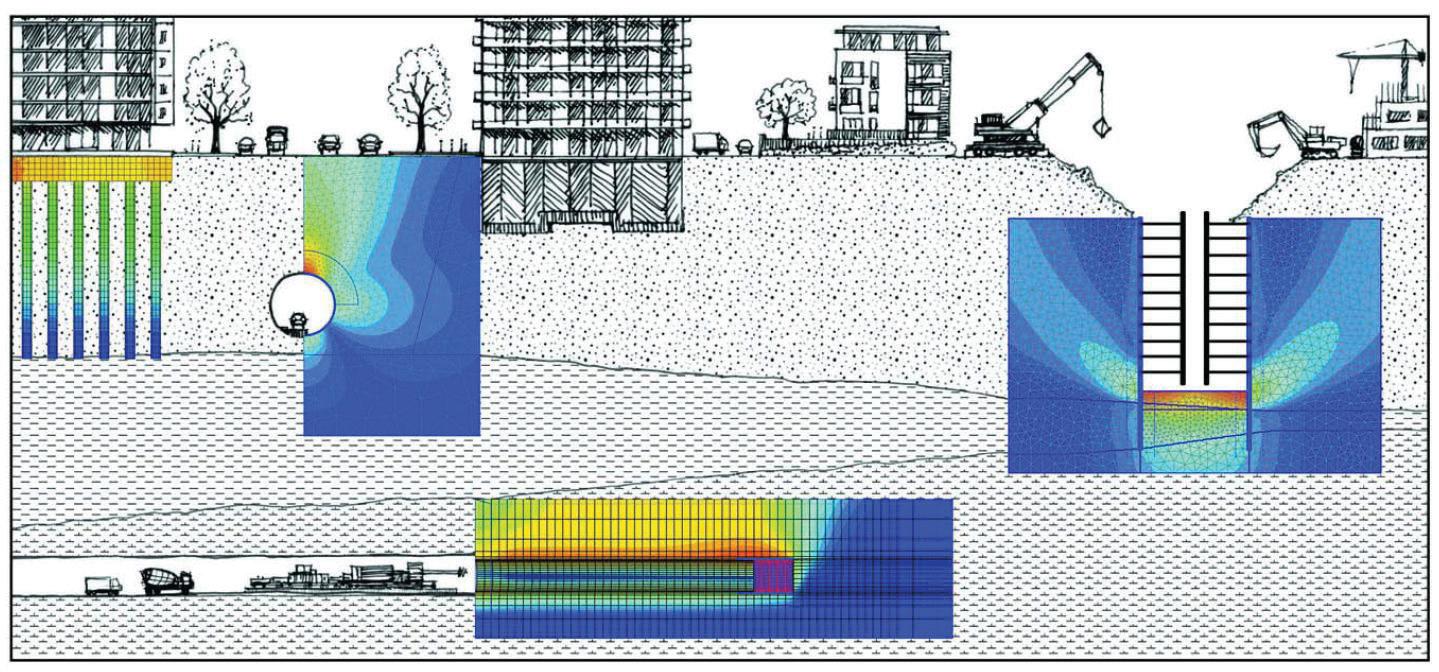


Written and Prepared by:


The IEM Golf Tournament 2023 was held on 25 June 2023 at Kelab Rekreasi Tentera Udara in Subang. Through the efforts of the committee members, we secured 15 sponsors and managed to sign up the maximum number of 128 participants comprising IEM members and corporate business associates.
After the group photograph was taken before the start of the event, everyone was smiling and ready to tee off.
The weather was near perfect: The sky was cloudy and a light breeze blew throughout the day. All participants had the chance to do some networking while enjoying a round of golf and during the lunch that followed.
IEM Past President YBhg. Dato’ Ir. Lim Chow Hock who joined the tournament, gave the welcome speech and presented Certificates of Appreciation to all the 15 sponsors, followed by the prize presentation ceremony.
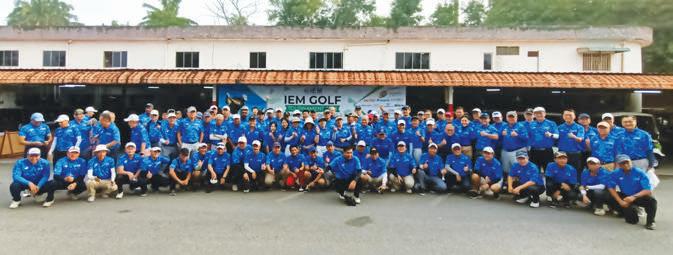
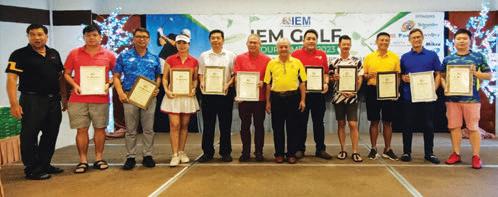

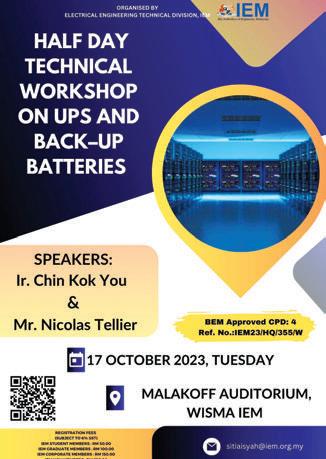
The winners of the tournament, based on System 36, were as follows:
Other winners were Mr. Nathan for Longest Drive at 240m and Madam Karen Yoong for Nearest To Line at 2.2cm.
The Organising Committee wishes to express its sincerest gratitude and thanks to sponsors, participants and the secretariat staff who have helped make this a successful event in the IEM calendar 2023.

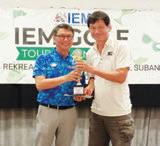

Yes! I would like to be a subscriber of The Institution of Engineers, Malaysia’s publications
Name: _________________________________________________________________________________________________________
Mailing Address: _________________________________________________________________________________________________
Company/Institution: ______________________________________________________________________________________________
Telephone
New Subscriber Renewal
Please commence my subscription from: _________________________(month/year) Signature: _______________________________
To start your subscription of IEM’s publications, complete this form and mail it back to the address below. For faster processing, fax it to: +603 7493 1047. Thank you.
What is your primary job title?
Corporate Management (including chairman, president, proprietor, partner, director, vice president, general manager, division manager, import/export manager, other corporate title)
Management (including project/contract/equipment/service/transport district manager, clerk of works, other technical or operating manager)
Engineering/Design (including chief engineer, chief designer, civil/ highway/mechanical/planning engineer, other engineering/design title)
Buying/Purchasing (including chief buyer, buyer, purchasing other buying/purchasing title)
Titles allied to the (architect, consultant, surveyor, research and development professor, lecturer, supervisor, superintendent, inspector or other allied title)
Others (please specify) ____________________________
What type of organisation do you work in? (Tick one box only)
Contractor
Sub-contractor specialist
Design and build contractor
Consulting engineering/architectural/quantity surveying practice
Mining/quarrying/aggregate production company
Petroleum producer
International/national authorities
National/regional/local government
Public utilities (electricity, gas, water, deck and harbour, other)
Manufacturer
Distributor/importer/agent
Construction department of large industrial/Commercial concern
Association/education establishment/research
Construction equipment hire/rental company
Project/construction management consultancy
Others (please specify) _______________________________
What are the main activities of your organisation? (Tick all that apply)
Constructions of: Manufacturer of:
Roads/bridges

Construction equipment
Dams/reservoirs/irrigation Cement structures Other construction materials
Foundations/tunnels
Structures/steel work
Distribution
Construction equipment
Construction materials
Building (commercial, industrial) Hire/rental of construction equipment
Housing Design
Construction management Earth-moving/open cast mining
Deep mining Aggregate production
Others (Please specify) _________________________________________
Rate (Please tick)
RM360.00 - 12 issues of JURUTERA
RM84.00 - 2 issues IEM Journal (Half-yearly)
Terms and Conditions:
1) The subscription is to be prepaid.
2) Please make cheque payable to Dimension Publishing Sdn. Bhd.
3) Subscriptions are not refundable.
4) Magazine/s will be sent to the mailing address given.
5) Students are entitled for a 20% discount from the above subscription rate.
6) Students must submit a photocopy of the student card together with the payment.
7) The above rate is inclusive of delivery charges and applicable in Malaysia only.
8) Additional delivery charges will apply to overseas subscribers.
For subscription enquiries, please contact +603-7493 1049 or email to info@dimensionpublishing.com
Written and Prepared by:
ENGINEER2023 Working Group Committee

An event of IEM Convention, ENGINEER and its concurrent exhibition, MARVEX, is an annual showcase dedicated to the Mechanical & Electrical (M&E), Civil & Structural (C&S) and ACMV&R fields, took place on 6-9 September 2023 at the KL Convention Centre in Kuala Lumpur.
The exhibitions aim to drive progress and foster innovation through their platforms, where connections are formed, ideas are exchanged and the transformative power of technology is experienced first-hand.
Doubled in size this year with over 160 exhibitors and 200 renowned brands from more than 10 countries, ENGINEER and MARVEX 2023 drew a crowd of 10,300 visitors from nearly 60 countries. The exhibitions provided a platform for cutting-edge technologies and solutions, transcending borders to foster regional alliances, collaboration and driving Environmental, Social & Governance (ESG) initiatives in the engineering and ACMV&R industries.
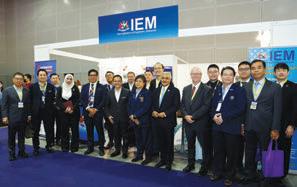
Beyond the exhibition, the four-day event served as a hub for regional industry meetings and discussions, with one of the highlights being the signing of two Memorandums of Understanding between local engineering associations and ACMV&R industries from Singapore, the Philippines, Thailand, Vietnam and China. These collaborative efforts are set to redefine the future of engineering and ACMV&R across borders.
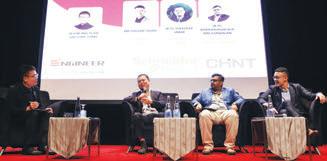

ENGINEER and MARVEX 2023 received unprecedented support from over 30 ministries, agencies and industry associations, both locally and internationally. This collective endorsement underscores the pivotal role these events play in advancing the engineering and ACMV&R sectors on a regional scale.
ENGINEER and MARVEX 2023 celebrated industry excellence through the ENGINEER and MARVEX Excellence Awards. These accolades recognised products and solutions that drove industry advancement and growth, while also spearheading ESG initiatives. Collaboration with exhibitors and partners is promoting ESG principles and fostering a sustainable future.
Winners of the ENGINEER and MARVEX Excellence Awards included:
CETM ELECTROTEST SDN. BHD.
INNOMATRIX TECH
SDN. BHD.
MAPEI MALAYSIA
SDN. BHD.
NIPPON PAINT (M)
SDN. BHD.
NYKK ENGINEERING GROUP
SDN. BHD.
STREAM ENVIRONMENT
SDN. BHD.
ACONLAND HOLDINGS SDN. BHD.
DELTA ELECTRONICS INT’L (SINGAPORE) PTE. LTD.
EVOAIR MANUFACTURING (M) SDN. BHD.
HAIER ELECTRICAL APPLIANCES MALAYSIA
HALTON GROUP ASIA
SDN. BHD.
PANASONIC MALAYSIA
SDN. BHD.
The IEM Convention, Malaysia’s Largest Engineering Symposium & Conferences, brought six exciting IEM conferences which covered a broad spectrum of engineering disciplines including Safety in Engineering, ASEAN Electrotechnical industry, Advances in Structural Design, ASEAN Digital Transformation, Smart Sustainable Cities Engineering and Project Management and two concurrent symposiums and conferences by ASHRAE and Carrier. With the goal to drive conversations on air quality, sustainable living standards and the challenges faced in the green economy and solutions respectively, these events drew close to 2,000 delegates who gained invaluable knowledge. In addition to these knowledge-sharing and enrichment sessions, there were also 40 power talk sessions and a total of 100 hours of enriching learning. With 120 local and international speakers sharing their expertise, ENGINEER and MARVEX 2023 added immeasurable value to the global engineering community.
Looking ahead, ENGINEER and MARVEX 2024 will continue to shine a spotlight on the key pillars of engineering, with a central focus on ESG initiatives. The event remains committed to recognising industry excellence, inspiring transformative change and unifying progress for the engineering and ACMV&R fraternities.
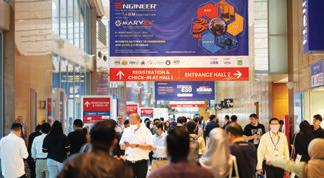
Mark your calendars for ENGINEER and MARVEX 2024
Join us when we embark on another year of innovation, collaboration and excellence at ENGINEER and MARVEX 2024, happening on 18-21 September 2024 at KL Convention Centre. Stay updated with us, follow our journey and be part of the next chapter in engineering's evolution.
For more information on ENGINEER and MARVEX, visit: https://engineermalaysia.com.my/ or contact IEM at: 603-79684001/2 or visit: www.myiem.org.my
Tarikh: 22 September 2023
Kepada Semua Ahli,
SENARAI CALON-CALON YANG LAYAK MENDUDUKI TEMUDUGA PROFESIONAL TAHUN 2023
Berikut adalah senarai calon yang layak untuk menduduki Temuduga Profesional bagi tahun 2023.
Mengikut Undang-Undang Kecil IEM, Seksyen 3.8, nama-nama seperti tersenarai berikut diterbitkan sebagai calon-calon yang layak untuk menjadi Ahli Institusi, dengan syarat bahawa mereka lulus Temuduga Profesional tahun 2023.
Sekiranya terdapat Ahli Korporat yang mempunyai bantahan terhadap mana-mana calon yang didapati tidak sesuai untuk menduduki Temuduga Profesional, surat bantahan boleh dikemukakan kepada Setiausaha Kehormat, IEM. Surat bantahan hendaklah dikemukakan sebulan dari tarikh penerbitan dikeluarkan.
Ir. Prof. Dr Zuhaina binti Zakaria Setiausaha Kehormat, IEM
PERMOHONAN BARU Nama Kelayakan
KEJURUTERAAN ELEKTRIK
MUHAMMAD YUSOF NUR BIN MOHD
SULAIMAN SHAH BE HONS (UTM) (ELECTRICAL, 2015)
KEJURUTERAAN ELEKTRONIK
MHD ISWANDI BIN KATUTU BE HONS (UMS) (ELECTRONICS AND TELECOMMUNICATIONS, 200) ME (UTM) (ELECTRICAL - MECHATRONICS AND AUTOMATIC CONTROL, 2013)
PERMOHONAN MENJADI AHLI KORPORAT Nama Kelayakan
KEJURUTERAAN AWAM
ROY MITHRAN A/L JAYA BALAN BE HONS (UTAR) (CIVIL, 2011)
KEJURUTERAAN ELEKTRIK
LIM CHEN HUP, ALVIN BE HONS (MULTIMEDIA UNIVERSITY) (ELECTRICAL, 2014)
PERPINDAHAN AHLI
No. Ahli Nama Kelayakan
KEJURUTERAAN KIMIA
100873 NORHIDAYAH BINTI IDERIS BE (UTM) (CHEMICAL - BIOPROCESS, 2009) PhD (USM) (2015)
123287 SITI SURAYA BINTI DOLAH BE (UM) (CHEMICAL, 2003)
KEJURUTERAAN AWAM
122802 ANDREA ANAK SOW BE (UMS) (CIVIL, 2013)
68888 AWANG MUHAMAD AYAHTULLAH BIN AWANG NAJERI BE HONS (UTM) (CIVIL, 2015)
70376 CHIN CHU VUN BE (CURTIN) (CIVIL AND CONSTRUCTION ENGINEERING, 2011)
28410 MOHD ALJAZIRI BIN YUSOF BE (UM) (CIVIL, 2008)
112372 SELVAKUMAR A/L IYAKANOO BE (UTM) (CIVIL, 1999)
KEJURUTERAAN ELEKTRIK
111850 MOHAMAD ZAHIN BIN MOHAMAD NOR BE HONS (UNITEN) (ELECTRICAL POWER, 2014)
105545 MOHAMMAD IZARUL HAQ BIN AWANG BE HONS (UTM) (ELECTRICAL - MECHATRONIC, 2008) ME (UTAR) (ELECTRICAL, 2018)
90360 NORDIN BIN MAD TATING BE HONS (UTeM) (ELECTRICAL (INDUSTRIAL POWER), 2012)
KEJURUTERAAN ELEKTRONIK
23686 WAN SHIRAM SHAWARI BIN WAN RAMLI BE (UTM) (ELECTRICAL - MECHATRONIC, 2003)
116462 WIDAD BINTI ISMAIL BE HONS (HUDDERSFIELD) (ELECTRONIC AND COMMUNICATION, 1999) PhD (BIRMINGHAM) (2004)
56582 ZAID BIN YAAKOB BE HONS (UTM) (ELECTRICAL, 2007)
KEJURUTERAAN GEOTEKNIK
30142 GUE CHANG YE BE HONS (UNITEN) (CIVIL, 2011) PhD (CAMBRIDGE) (2017)
KEJURUTERAAN MEKANIKAL
25481 TAN EE SANN BE HONS (UNITEN) (MECHANICAL, 2003)
• THE INSTITUTION OF
PERPINDAHAN MENJADI AHLI KORPORAT No. Ahli Nama Kelayakan
KEJURUTERAAN AWAM
26627 WALTER BIN TAIMIN BE HONS (UTM) (CIVIL, 2006) MSc (UTM) (CIVIL (GEOTECHNIQUE), 2008)
KEJURUTERAAN PEMBUATAN
53899 NUR AZIERA BINTI AZMAN BE (UM) (MANUFACTURING, 2015) ME (UPM) (MANUFACTURING SYSTEMS, 2020)
KEJURUTERAAN MEKANIKAL
79027 RAMESH SUGAN A/L RAJENDRAN BE HONS (UNITEN) (MECHANICAL, 2014) ME (UM) (MECHANICAL, 2021)
PERPINDAHAN MENJADI AHLI JURUTEKNIK KEJURUTERAAN No. Ahli Nama Kelayakan
KEJURUTERAAN MEKANIKAL
114686 MOHD SABRIE BIN AZAMAN DIP. (POLITEKNIK SULTAN SALAHUDDIN ABDUL AZIZ SHAH) (MECHANICAL, 2013)
Pengumuman yang ke-179
SENARAI PENDERMA KEPADA WISMA DANA BANGUNAN IEM
Institusi mengucapkan terima kasih kepada semua yang telah memberikan sumbangan kepada tabung Bangunan Wisma IEM. Ahli-ahli IEM dan pembaca yang ingin memberikan sumbangan boleh berbuat demikian dengan memuat turun borang di laman web IEM http://www.myiem.org.my atau menghubungi secretariat di +603-7968 4001 / 5518 untuk maklumat lanjut. Senarai penyumbang untuk bulan Ogos 2023 adalah seperti jadual di bawah:

Persidangan Majlis IEM yang ke-433 pada 31 Oktober 2022 telah meluluskan sebanyak 681 ahli untuk permohonan baru dan permindahan ahli. Berikut adalah senarai ahli mengikut disiplin kejuruteraan:
Senarai nama ahli dan kelayakan adalah seperti di bawah. Institusi mengucapkan tahniah kepada ahli yang telah berjaya. Ir. Prof. Dr Zuhaina binti Zakaria Setiausaha Kehormat, Institusi Jurutera Malaysia, Sesi 2022/2023
PERMINDAHAN AHLI KEPADA AHLI FELLOW No. Ahli Nama Kelayakan
KEJURUTERAAN AWAM
22462 Ir. DR RAIZAL SAIFULNAZ BIN MUHAMMAD RASHID BE. HONS (UTM) (CIVIL) (1998) PhD (ADELAIDE) (STRUCTURAL, 2008)
PEMINDAHAN KEPADA AHLI 'SENIOR' No. Ahli Nama Kelayakan
KEJURUTERAAN AWAM
38069 WONG LEE JOHN BE HONS (UNITEN) (CIVIL, 2007)
KEJURUTERAAN KIMIA
19969 MOHANA MURALI A/L KUPPUSAMY BE HONS (SHEFFIELD) (CHEMICAL PROCESS & FUEL TECHNOLOGY, 1997) MSc (SHEFFIELD) (PROCESS SAFETY & LOSS PREVENTION, 1998)
KEJURUTERAAN MEKANIKAL
12662 RIDZUAN BIN ABDUL MALIK BSc (ABERDEEN) (MECHANICAL, 1988)
PEMINDAHAN AHLI KEPADA AHLI KORPORAT
No. Ahli Nama Kelayakan
KEJURUTERAAN AWAM
101036 CHUAH RUN EN BE HONS (UKM) (CIVIL & ENVIRONMENTAL, 2015)
66740 CHUAH SIONG THIAM BE HONS (KLiUC) (CIVIL, 2010)
80662 ENG WEI QI BE HONS (UTM) (CIVIL, 2014)
106112 FELICIA ANAK MICHAEL MULOK BE HONS (UTHM) (CIVILCONSTRUCTION, 2006)
31546 GOH KER SHIN BE HONS (UTM) (CIVIL, 2011)
89992 HEW WENG SAN BE HONS (UNITEN) (CIVIL, 2013)
112595 HO EE WEE, WILLIAM BE HONS (SWINBURNE) (CIVIL, 2012)
113101 LEE SU KIN, JESSICA BE HONS (UNIMAS) (CIVIL, 2012)
66429 LIM CHE CHUAN BE HONS (UTM) (CIVIL, 2012)
95859 LIM SHIANG JIE BE HONS (UTAR) (CIVIL, 2011)
38632 LOO CHOONG MENG BE HONS (UM) (CIVIL, 2008)
108400 MASLINDA BINTI MOHIDDIN BE HONS (MALAYA) (CIVIL, 2005)
39116 MOHD HAFIZ BIN ABDULLAH BE HONS (UTHM) (CIVIL, 2011)
33561 MOHD KHUZAIRI BIN ABD AZIZ BE HONS (UiTM) (CIVIL, 2009)
112707 NOR SHAHRIZAL BIN KATABE BE HONS (UTM) (CIVIL, 2010)
105231 SIM LIANG SHIN BE HONS (SWINBURNE) (CIVIL, 2011)
41750 TAN SOONG CHING BE HONS (UKM) (CIVIL & STRUCTURAL, 2011)
72353 TAN XIAN HUI BE HONS (NEW SOUTH WALES) (CIVIL, 2013)
KEJURUTERAAN BAHAN
88310 MUHAMAD IZWAN BIN ZAKARIA BE HONS (IIUM) (MATERIAL, 2014)
KEJURUTERAAN ELEKTRIKAL
60518 ABDUL HADYAN SYAFIQ BIN ABDUL JALIL BE HONS (UiTM) (ELECTRICAL, 2016)
94367 AHMAD USSHAMMA BIN AMERUDIN BE HONS (UiTM) (ELECTRICAL, 2012)
90070 HO LIN WEI BE HONS (USM) (ELECTRICAL, 2015)
42166 JARVIS LING SING KIENG BE HONS (SWINBURNE) (ELECTRICAL & ELECTRONIC, 2013)
93859 LIM YIN KIN BE HONS (LIVERPOOL JOHN MOORES) (ELECTRONICS AND CONTROL SYSTEMS, 2012) MSc (NEWCASTLE UPON TYNE) (ELECTRICAL POWER, 2016)
87574 MIKE NELSON DONIL BE HONS (UMS) (ELECTRICAL & ELECTRONICS, 2011)
57294 MOHD KHAIRI BIN MAT KIMI BE HONS (UTHM) (ELECTRONIC, 2015)
25374 MOHD ZULFIKRE BIN M RASIB @ M RASIF BE HONS (UiTM) (ELECTRICAL, 2007)
94368 MUHAMMAD AIDHIL BIN SAMSUDIN BE HONS (UPNM) (ELECTRICAL AND ELECTRONIC (POWER), 2016)
65527 MUHAMMAD ARIF BIN JAMAL BE HONS (UTHM) (ELECTRICAL, 2013)
104278 MUHAMMAD FAIQ BIN MOHD DANI BE HONS (UiTM) (ELECTRICAL, 2013)
51563 MUHAMMAD IKHSAN KHAMIL BIN MOHD SAFARI BE HONS (UiTM) (ELECTRICAL, 2012)
71116 NG CHEN KIAT BE HONS (UNITEN) (ELECTRICAL & ELECTRONICS, 2013)
27987 ONG CHANG SHEN BE HONS (MMU) (ELECTRICAL, 2006)
89294 ONG KANG SHEN BE HONS (UTAR) (ELECTRICAL & ELECTRONIC, 2018)
79576 RAJA NASUHA BIN RAJA CHIK BE HONS (UNITEN) (ELECTRICAL & ELECTRONIC, 2009)
28743 RIJALUR RAHIMI BIN MOHD ROSELI BE HONS (UTHM) (ELECTRICAL, 2010)
29802 ROSLI BIN ABDULLAH BE HONS (UTM) (ELECTRICAL, 2007)
95840 VASANTHASEHNAN RAM A/L RAJARAM BE HONS (USM) (ELECTRICAL & ELECTRONICS, 2015)
89639 YENNIE MELODY WONG BE HONS (UMS) (ELECTRICAL & ELECTRONICS, 2012)
KEJURUTERAAN ELEKTRONIK
101992 AHMAD FATHI BIN ZAINAZLAN BE HONS (IIUM) (COMMUNICATION, 2010)
18614 RAVINDRAN A/L PUNNIAH @ RAMAN BE (ABERTAY DUNDEY) (ELECTRONIC, 1996) MSc (WARWICK) (ENGINEERING BUSINESS MANAGEMENT, 2007)
72722 RODZIDAH BINTI MOHD RODZI BE HONS (UTM) (ELECTRICALELECTRONICS, 2003)
KEJURUTERAAN INDUSTRI
59143 AINUL AKMAR BINTI MOKHTAR BSc (PURDUE) (INDUSTRIAL, 1996) MSc (NOTTINGHAM) (MANUFACTURING SYSTEMS, 2001) PhD (UTP) (MECHANICAL, 2011)
KEJURUTERAAN KIMIA
66060 KHAW WEI CHUEN BE HONS (TAYLOR'S) (CHEMICAL, 2017)
33710 SELVA NATHAN A/L SASITHARAN BE HONS (MALAYA) (CHEMICAL, 2005)
KEJURUTERAAN MEKANIKAL
64840 AHMAD EZAN BIN MUSTAPHA ADV. DIP (UiTM) (MECHANICAL, 1995)
112790 AL'AZHARINO BIN AHMAD BE HONS (UTHM) (MECHANICAL, 2006) ME (UTM) (FORENSICS, 2021)
87107 ANDY IQBAL BIN AZIZ BE HONS (UTHM) (MECHANICAL, 2013)
45440 JEE JIA JIUN BE HONS (USM) (MECHANICAL, 2014)
101997 LIM YEAN TIT BE HONS (SUNDERLAND) (MECHANICAL, 2013)
111119 MAI ZAINATUN NUFUS BINTI MOHD JAFFAR BE HONS (MALAYA) (MECHANICAL, 201) ME (UKM) (ENVIRONMENTAL, 2019)
27776 MOHD HAFIZI BIN NOR IZHAM BE (UMP) (MECHANICAL, 2008)
35024 MOHD ZAMADI BIN MAT LODDIN BE HONS (UiTM) (MECHANICAL, 2012) ME (UTHM) (MECHANICAL, 2014)
88838 MUHAMMAD HAFIZ BIN AZMI BE (VANDERBILT) (MECHANICAL, 2016)
31471 NUR ISLAM BIN NUR ISKANDAR BE HONS (UiTM) (MECHANICAL, 2009)
111321 PHUA SEH YONG BE HONS (UTAR) (MECHANICAL, 2013)
30572 SAW CHUN LIN BE HONS (UTM) (MECHANICAL, 2001) ME (UTM) (MECHANICAL, 2009) PhD (UTP) (MECHANICAL, 2014)
85943 TAM JUN HAO BE HONS (MMU) (MECHANICAL, 2014)
101013 THINESH A/L SUPPAIAH BE HONS (UNITEN) (MECHANICAL, 2014)
54062 WANG WEN JIANG BE HONS (UTAR) (MECHANICAL, 2012)
112604 ZULKIFLEE BIN UMAR BE HONS (WOLLONGONG) (MECHANICAL, 2004)
KEJURUTERAAN PEMBINAAN
114422 MUHAMMAD MUSADDIQ BIN ABD MANAP BE HONS (UTM) (CIVIL, 2016)
KEJURUTERAAN PEMBUATAN
90336 SHAHRIL BIN SULAIMAN BE (YAMANASHI) (MECHANICAL SYSTEMS, 2012) ME (UPM) (MANUFACTURING SYSTEMS, 2019)
KEJURUTERAAN STRUKTUR
39147 KANG HO KIAT BE HONS (TASMANIA) (STRUCTURAL, 2001)
PEMINDAHAN KEPADA AHLI (MELALUI PEPERIKSAAN PENILAIAN PROFESIONAL)
No. Ahli Nama Kelayakan
KEJURUTERAAN AEROANGKASA
101936 LIEW CHEE LEONG DCAM PART - 66 CATEGORY C HOLDER (2018)
KEJURUTERAAN AWAM
16392 AMZAH BIN KASMURI BSc (CALIFORNIA STATE) (CIVIL ENGINEERING, 1992)
70646 BOON CHIA WENG
73014 CHOU KA CHUN
97356 MOHAMAD SHAKRI BIN MOHMAD SHARIFF
28316 MOHD AMIN BIN SHAFII
BE HONS (NANYANG) (CIVIL, 2009)
PhD (OXFORD) (2014)
BE HONS (CURTIN) (CIVIL & CONSTRUCTION, 2014)
ME (UTM) (STRUCTURE, 2018)
BE HONS (UiTM) (CIVIL, 2009)
MSc (UiTM) (CIVIL (GEOTECHNIQUE), 2011)
PhD (UiTM) (CIVIL, 2017)
BE HONS (UTM) (CIVIL, 2008)
ME (UTM) (CIVILTRANSPORTATION & HIGHWAY, 2010)
19917 ONG WEN HOW BE HONS (UTM) (CIVILCONSTRUCTION MANAGEMENT, 2001)
93858 SYAHMIZZI IFWAT BIN AZHARNIM
94380 THARMESH SELVARAJOO
BE HONS (UiTM) (CIVIL, 2013) MSc (UiTM) (GEOTECHNICAL, 2015)
BE HONS (PORTSMOUTH) (CIVIL, 2014) MSc (CARDIFF) (STRUCTURAL, 2017) PhD (CARDIFF) (2020)
KEJURUTERAAN ELEKTRIKAL
80654 GOH YEH HUANN BE HONS (MALAYA) (ELECTRICAL, 2004) MSc (MALAYA) (2007) PhD (MALAYA) (2013)
19177 MOHD ISNARI BIN IDRIS BE HONS (UTM) (ELECTRICAL, 1991)
87393 MOHD KASIM BIN KASWI BE HONS (UiTM) (ELECTRICAL, 2000)
20145 TONG YEAH CHUEN BE HONS (MALAYA) (ELECTRICAL, 1999) ME (MALAYA) (2011)
41875 W NURUL ALIAA BINTI W MAZLAN BE HONS (UTeM) (ELECTRONICS (TELECOMMUNICATION ELECTRONICS), 2010)
KEJURUTERAAN KIMIA
25000 MOHD RIZAL BIN ADNAN BE HONS (MALAYA) (CHEMICAL, 2005)
25327 WAN YOKE KIN BE HONS (UTM) (CHEMICAL, 2007)
KEJURUTERAAN MEKANIKAL
49866 MOHD FAIZ BIN MOHD BOKHADI BE HONS (UTM) (MECHANICAL, 2010)
25824 SAIFULNIZAN BIN JAMIAN BE HONS (UKM) (MECHANICAL AND MATERIALS, 1999) MSc (UKM) (MECHANICAL AND MATERIALS, 2002) PhD (NAGOYA) (2012)
54261 VIMAL RAU A/L APAROW BE HONS (UTeM) (MECHANICAL (AUTOMOTIVE), 2011) MSc (UTeM) (MECHANICAL, 2013) Phd (UPNM) (MECHANICAL, 2018)
PERMOHONAN MENJADI AHLI KORPORAT No. Ahli Nama Kelayakan
KEJURUTERAAN AWAM
118854 FAUZI BIN ABDUL RAHMAN BE HONS (MALAYA) (CIVIL, 2005)
118558 MOHAMAD ASHRULNIZAM BIN ABDUL RAHIM BE HONS (UPM) (CIVIL, 2006)
118852 NOOR IRWAN BIN OTHMAN BE HONS (UiTM) (CIVIL, 2006)
118844 NORHAFSAH BINTI SELAMAT BE HONS (UTM) (CIVIL, 2017)
118845 NORSHAZILA BINTI MAHMOOD BE HONS (UiTM) (CIVIL, 2010)
118846 SAMSULNIZAM BIN ZULKAPLI BE HONS (USM) (CIVIL, 2004) ME (UTM) (ENGINEERING MANAGEMENT, 2014)
118555 YONG THONG SENG BE HONS (SHEFFIELD HALLAM) (CIVIL, 1998)
KEJURUTERAAN BAHAN
118559 AZZURA BINTI ISMAIL BE HONS (USM) (MATERIALS, 1999) MSc (USM) (MATERIALS, 2003) PhD (LEEDS) (2014)
118697 SUFIZAR BINTI AHMAD BE HONS (USM) (MATERIALS, 2002) MSc (USM) (MATERIALS, 2003) PhD (UKM) (MECHANICAL & MATERIALS, 2010)
KEJURUTERAAN ELEKTRIKAL
118692 ABDUL RAZIB BIN DAWOOD BE HONS (WARWICK) (ELECTRICAL, 1994) MSc (MANITOBA) (1997)
118843 CHAN KOK LEONG BE HONS (PURDUE) (ELECTRICAL, 1998) ME (UTM) (ELECTRICALPOWER, 2011)
118694 HALMI BIN RUSMAN BE HONS (UiTM) (ELECTRICAL, 2008)
118853 MELVIN LONG BE HONS (UTHM) (ELECTRICAL, 2010)
118850 MOHD FARID BIN MD KHALID BE HONS (UTM) (ELECTRICAL, 2007)
118693 MOHD LATIF BIN MD KADIR BE HONS (UiTM) (ELECTRICAL, 2007)
118847 MUHAMAD AKMAL BIN MD RADZI BE HONS (UiTM) (ELECTRICAL, 2012)
118556 MUHAMAD RIYASRUDIN BIN MYDIN ABDUL GHANI BE HONS (UTP) (ELECTRICAL & ELECTRONICS, 2009)
118557 NORAINI BINTI BAHARUDIN BE HONS (UNITEN) (ELECTRICAL POWER, 2013)
KEJURUTERAAN KIMIA
118560 BAN ZHEN HONG BE HONS (UMS) (CHEMICAL, 2009) MSc (USM) (CHEMICAL, 2011) PhD (UTP) (CHEMICAL, 2016) 118855 NOOR ARNIDA BINTI ABDUL TALIP BE HONS (UTP) (CHEMICAL, 2007)
KEJURUTERAAN MARIN
118567 ESVARAN A/L APARAHU BE HONS (UTM) (MECHANICAL-MARINE TECHNOLOGY, 2010)
KEJURUTERAAN MEKANIKAL
118695 AHMAD SUKRI BIN SAAD BSc HONS (MEMPHIS STATE UNIVERSITY) (MECHANICAL, 1989)
118848 MOHD SHAFEEQ BIN MOHD TAHIR BE HONS (UiTM) (MECHANICAL, 2010) 118851 WONG CHU VUI BE HONS (HERTFORDSHIRE) (MECHANICAL, 2009)
KEJURUTERAAN PEMBUATAN 118696 MUHAMMAD MUKHTAR BIN NOOR AWALLUDIN BE HONS (IIUM) (MANUFACTURING, 2010) MSc (CENTRAL LANCASHIRE) (LOGISTIC AND SUPPLY CHAIN MANAGEMENT, 2012) PhD (UMP) (2020)
Note: Continuation would be published in November 2023. For the list of approved “ADMISSION TO THE GRADE OF STUDENT”, please refer to IEM web portal at http://www.myiem.org.my.
A notice inviting nominations for the Election of Council Members for Session 2024/2025 will be posted on the IEM Notice Board and IEM website by 10 November 2023 for the information of all Corporate Members of IEM. Following the close of nominations on 9 December 2023, the election exercise will proceed. All Corporate Members residing overseas are requested to take note of the requirements of the Bylaw, Section 5.17, as shown below.
The voting paper (in hardcopy or electronic form) shall, not less than twenty eight (28) clear days before the date of the Annual General Meeting, be sent by post or in electronic mail or message to all Corporate Members. The voting paper (in hardcopy or electronic form) shall be returned or submitted online and in turn notified to the Honorary Secretary in a sealed envelope or electronically encrypted format so as to reach him by a specified date not less than seven (7) days before the Annual General Meeting.
Electronic Ballot Papers to be sent to all Corporate Members by 4 March 2024.
Thank you.
Election Officer, IEM

